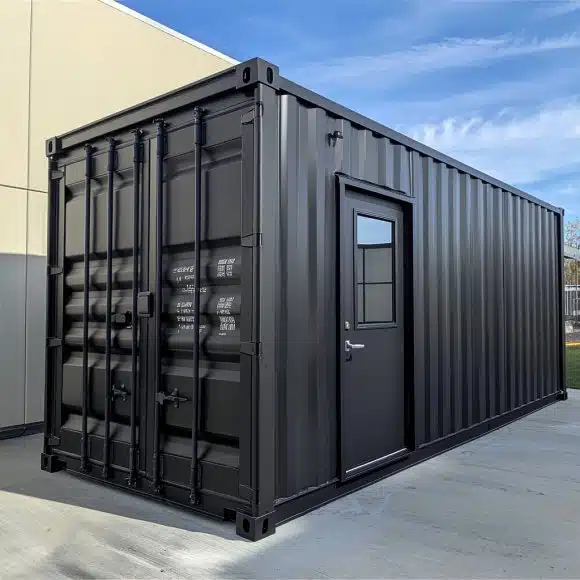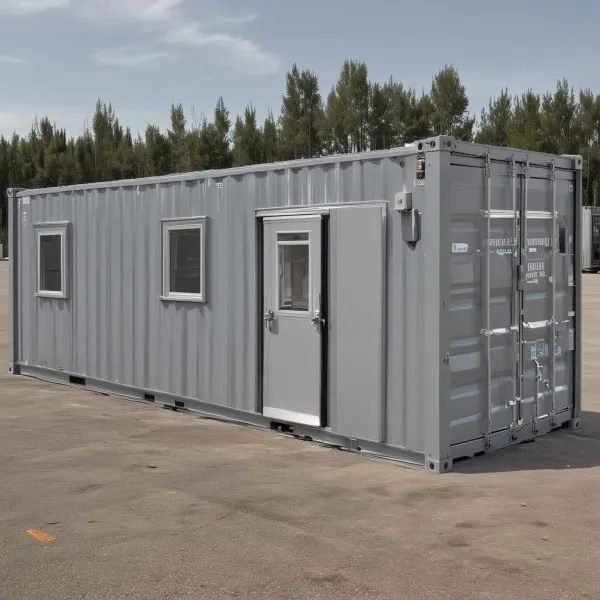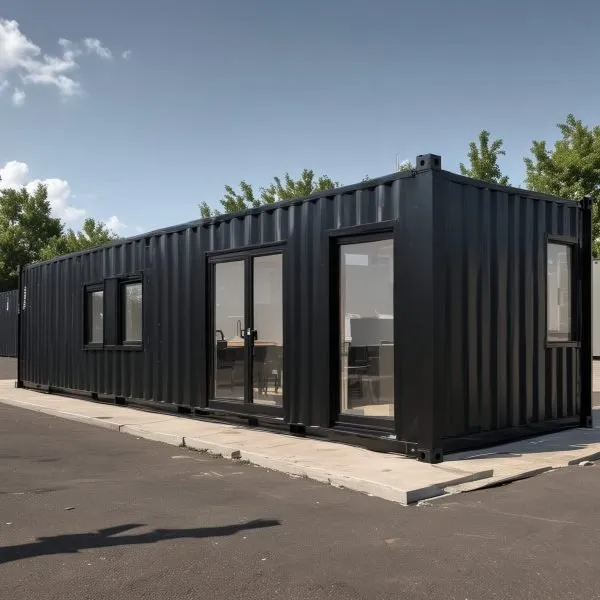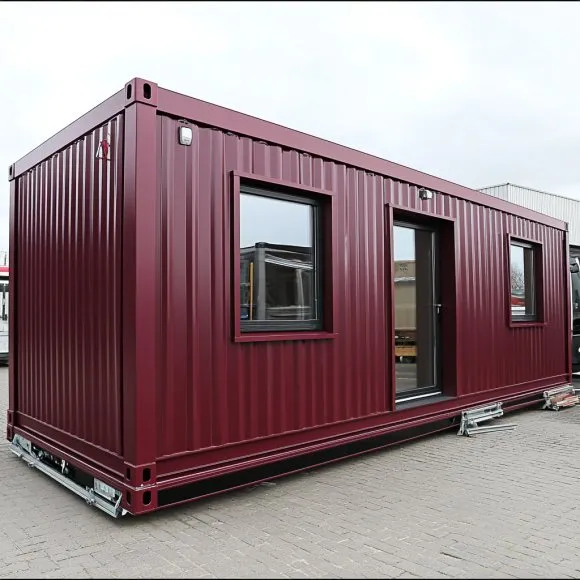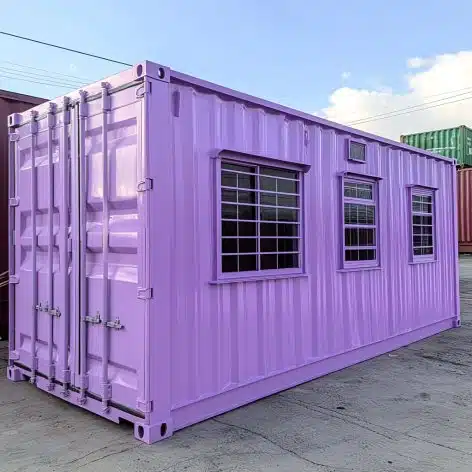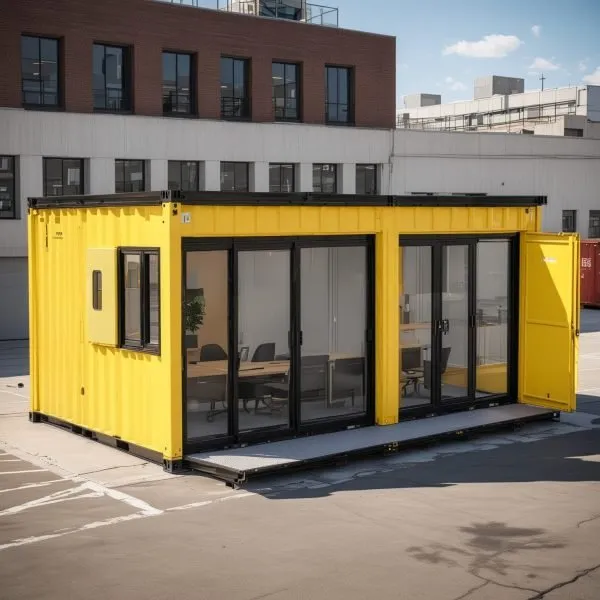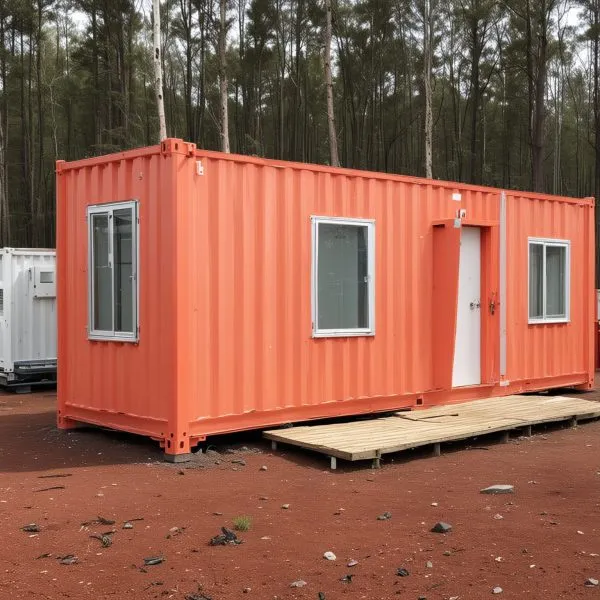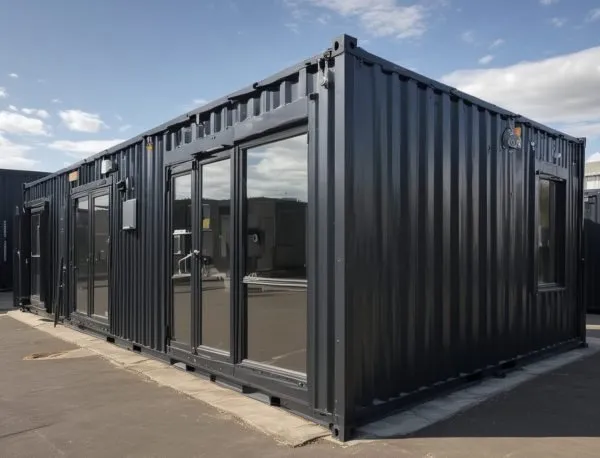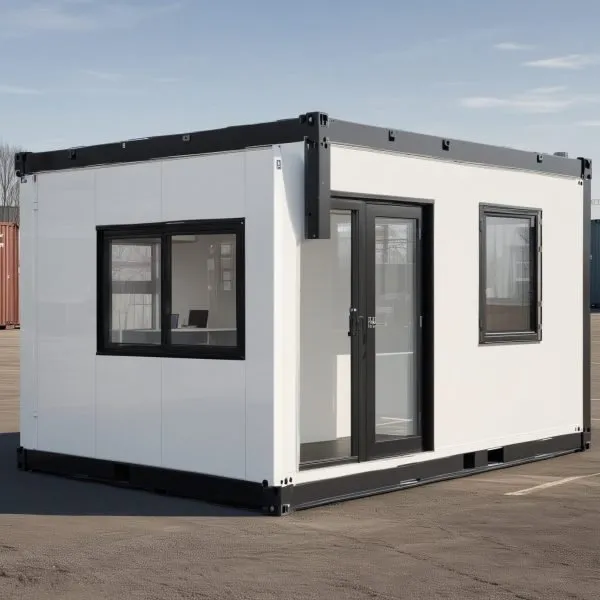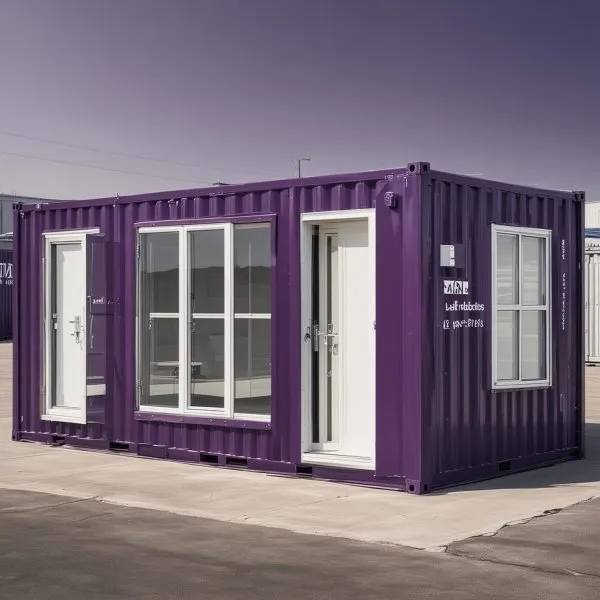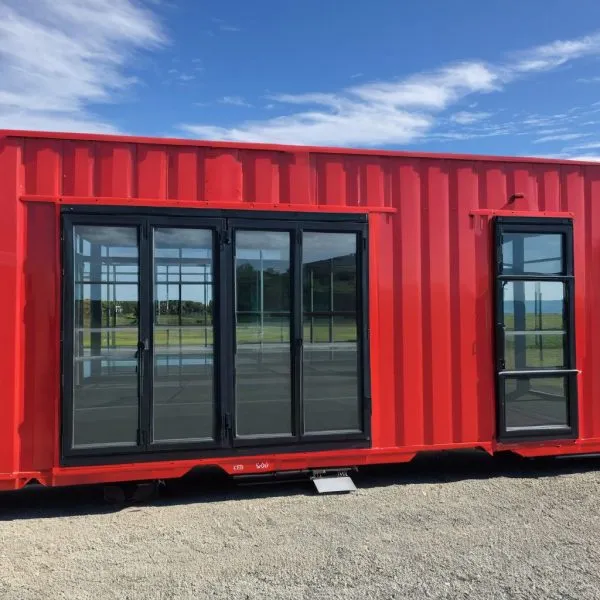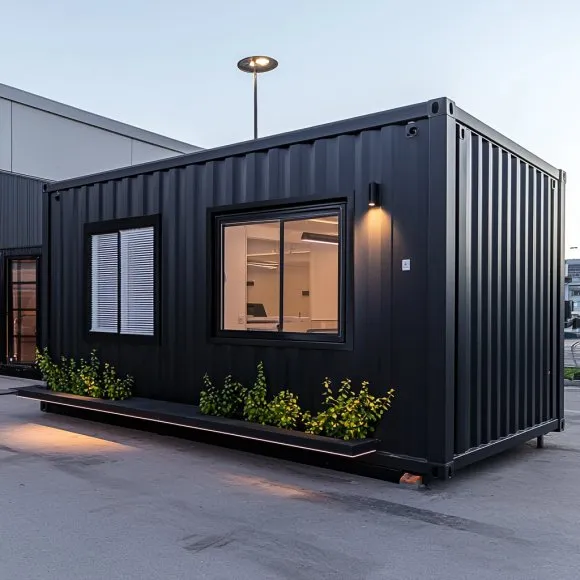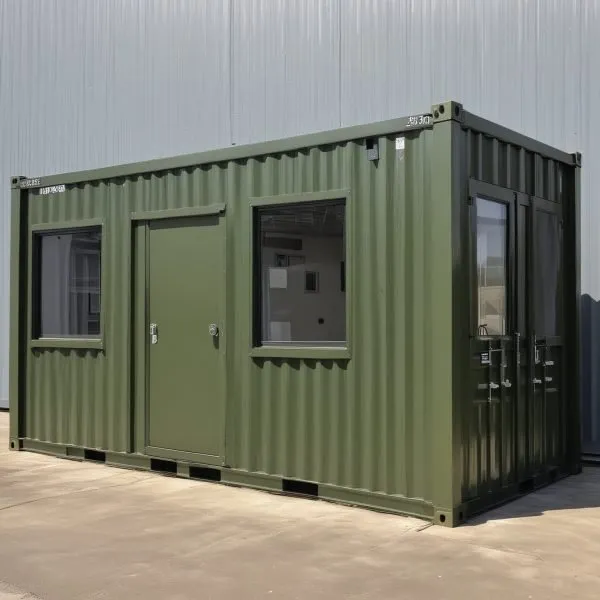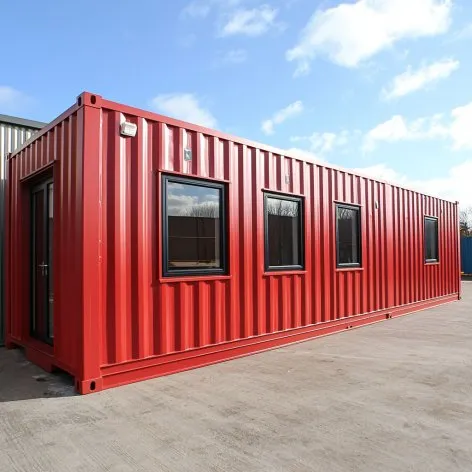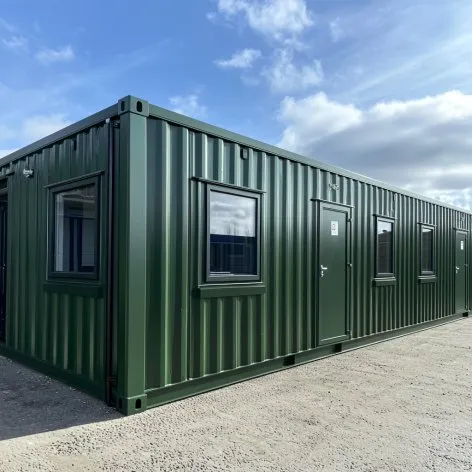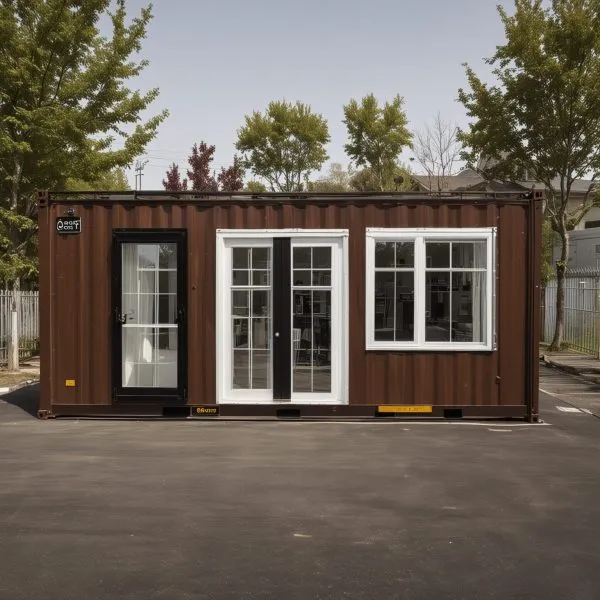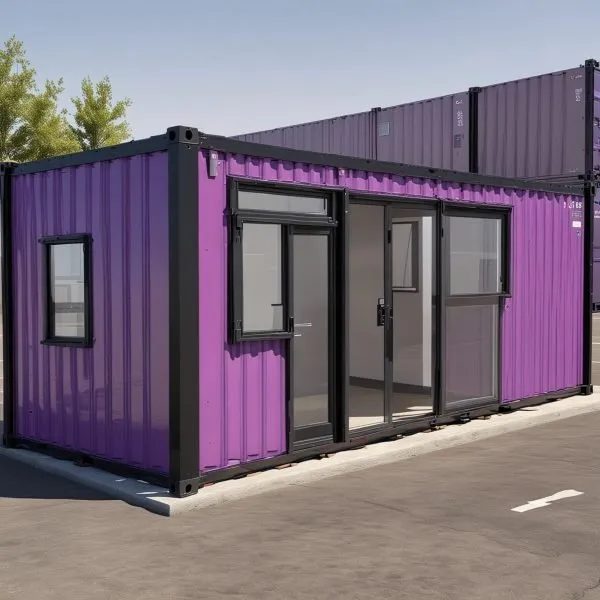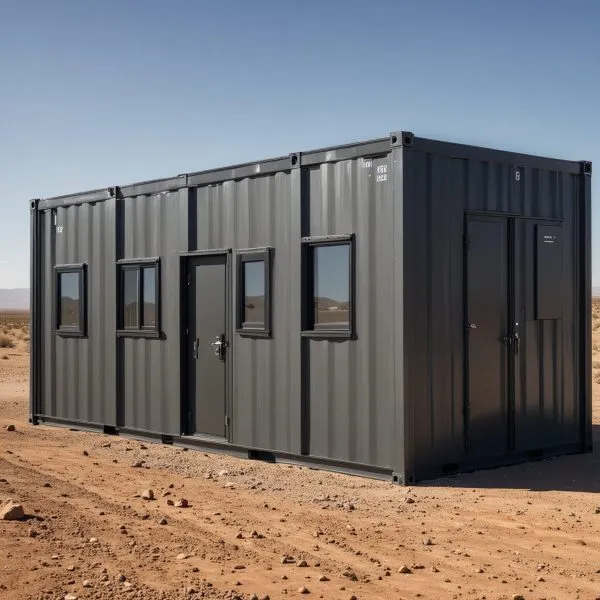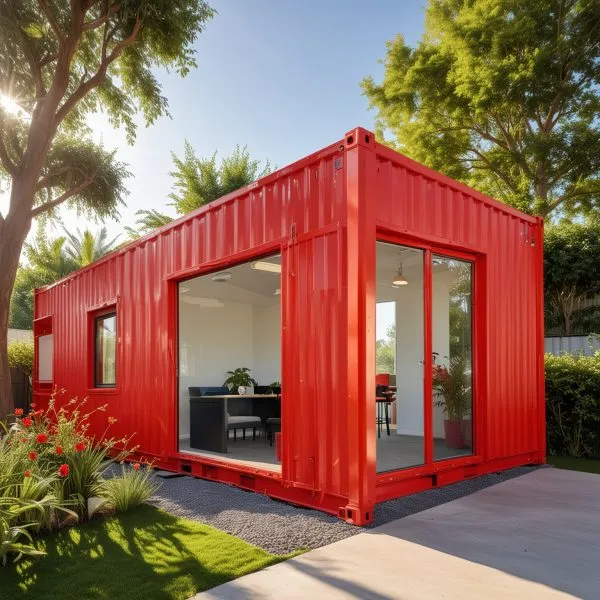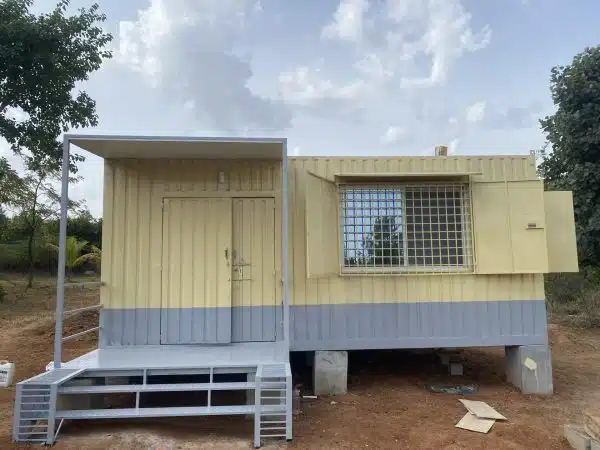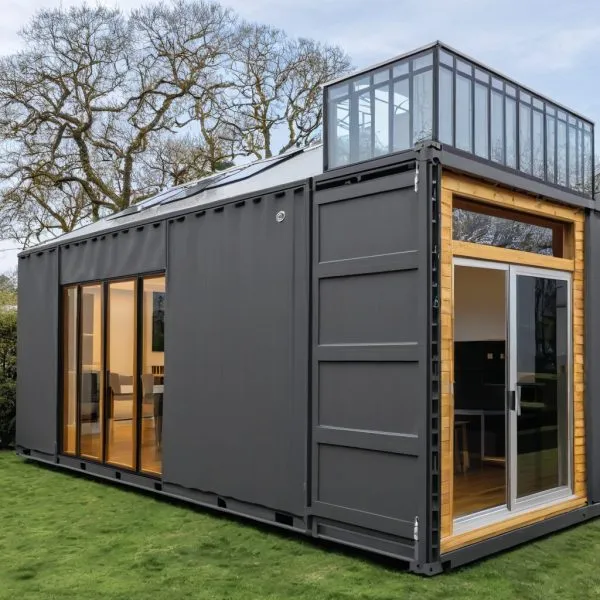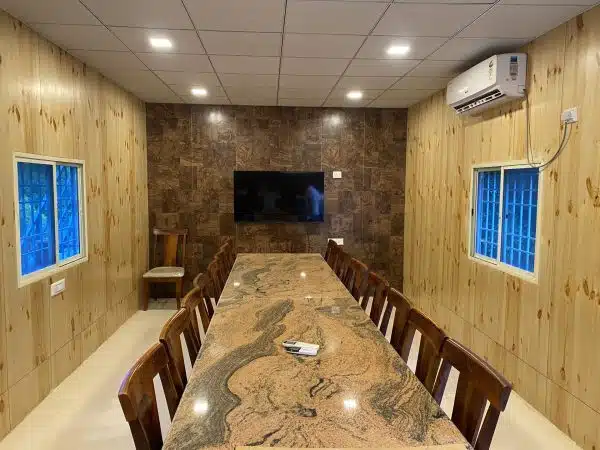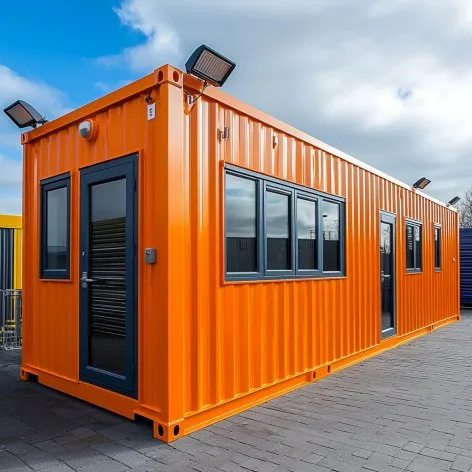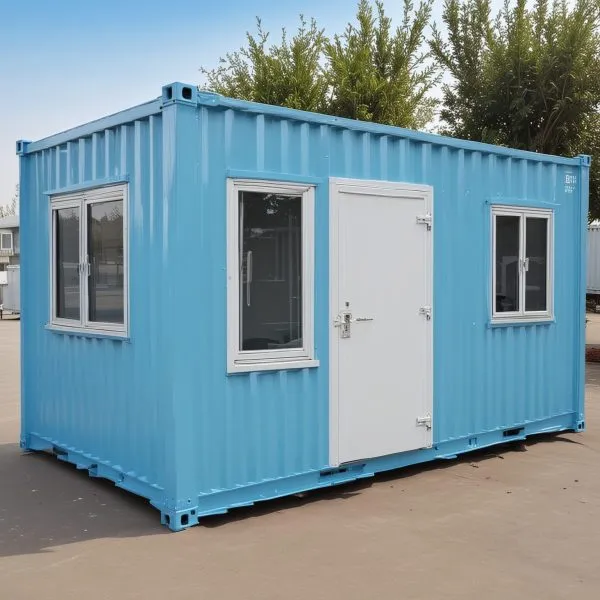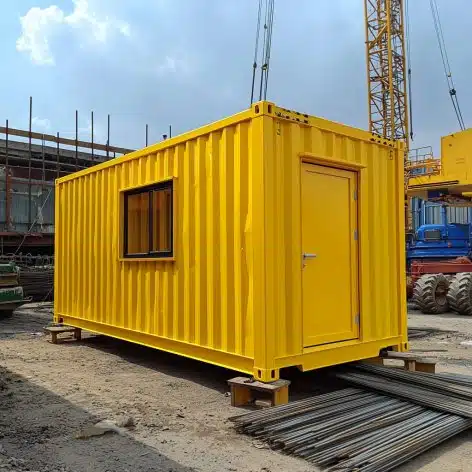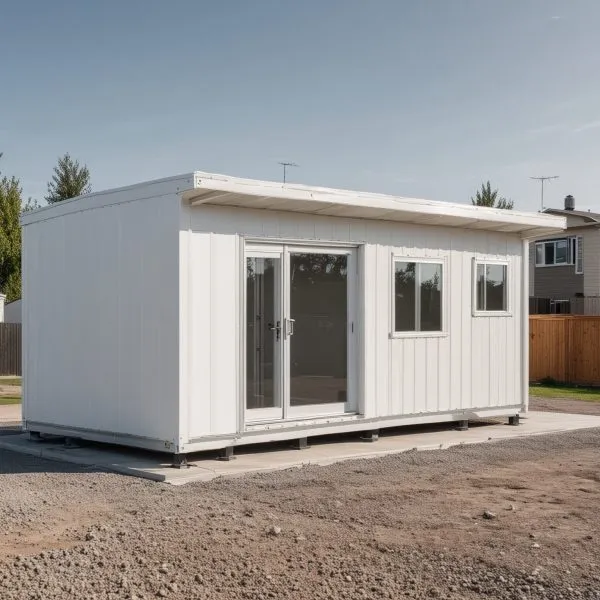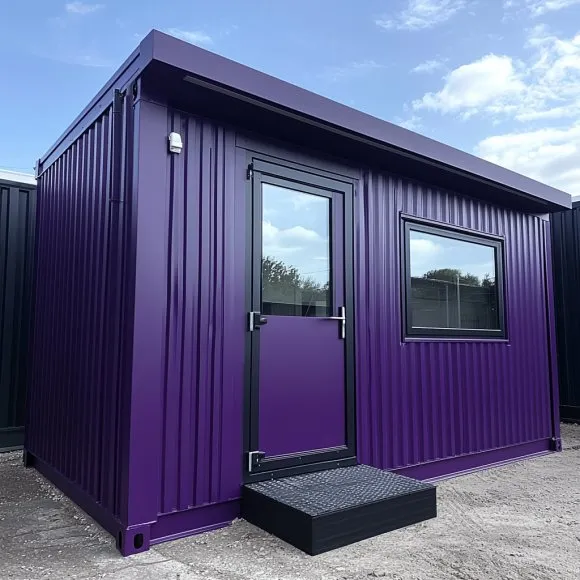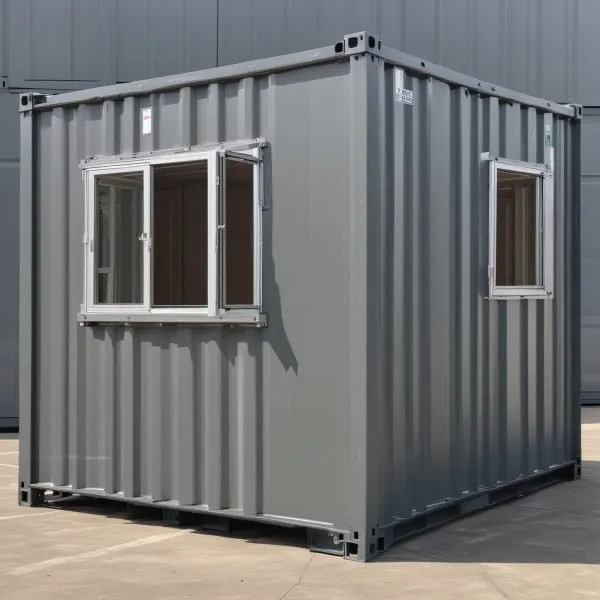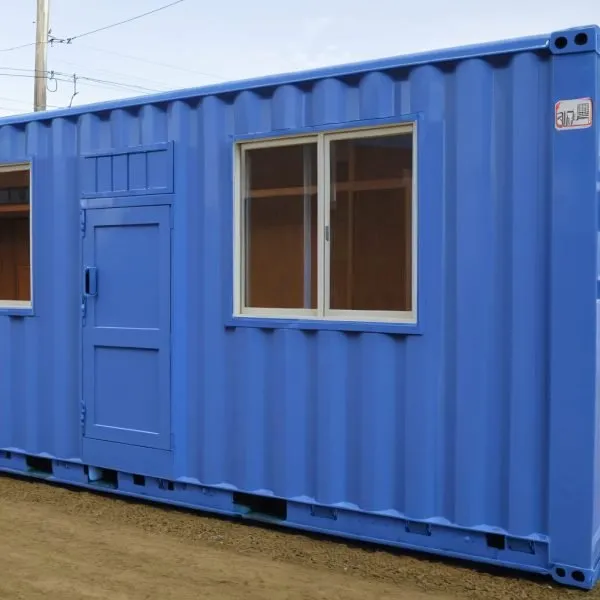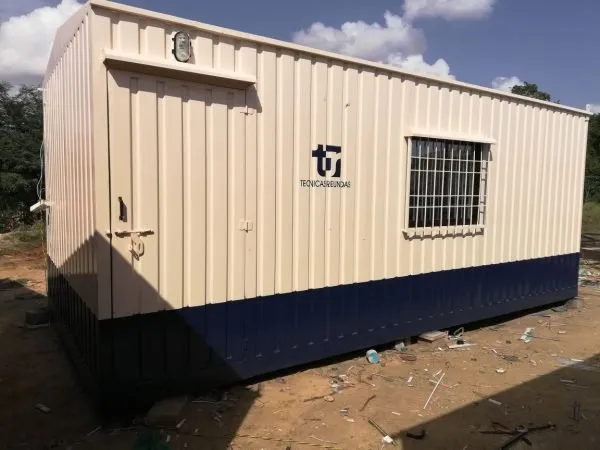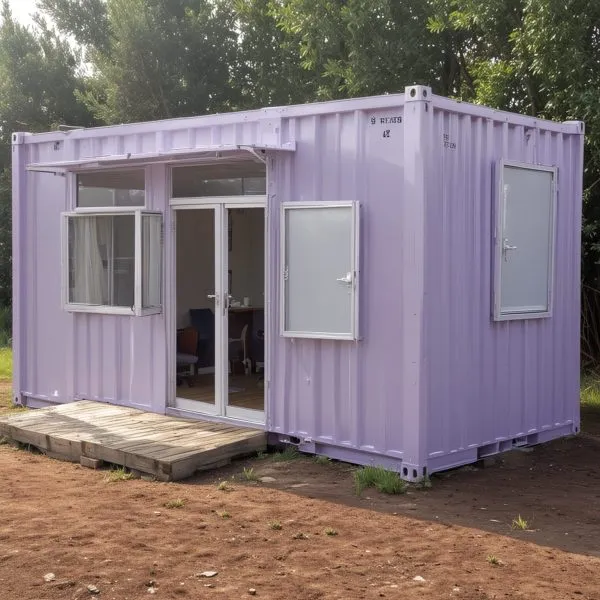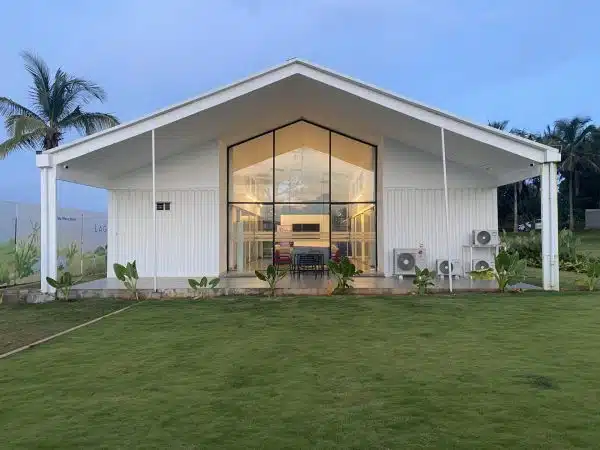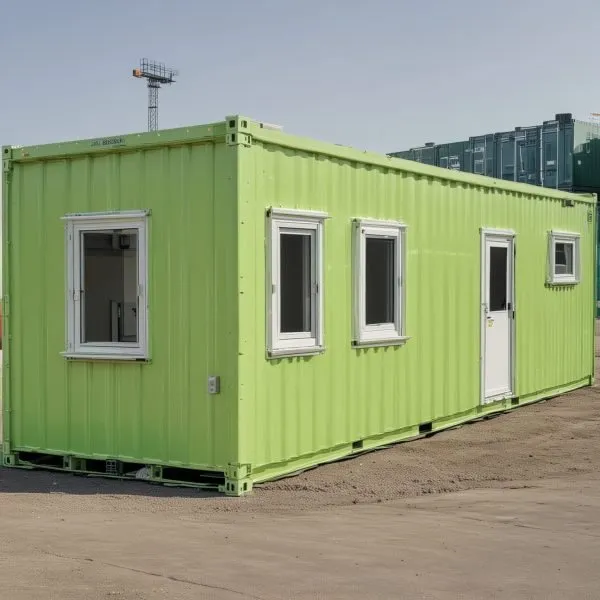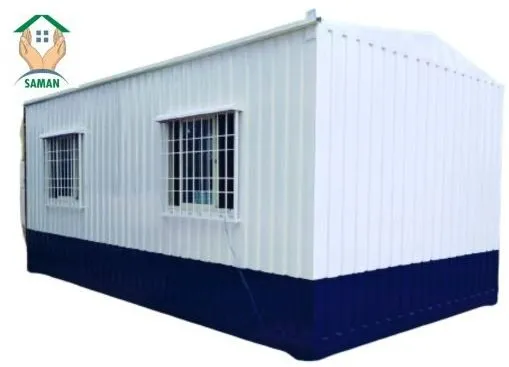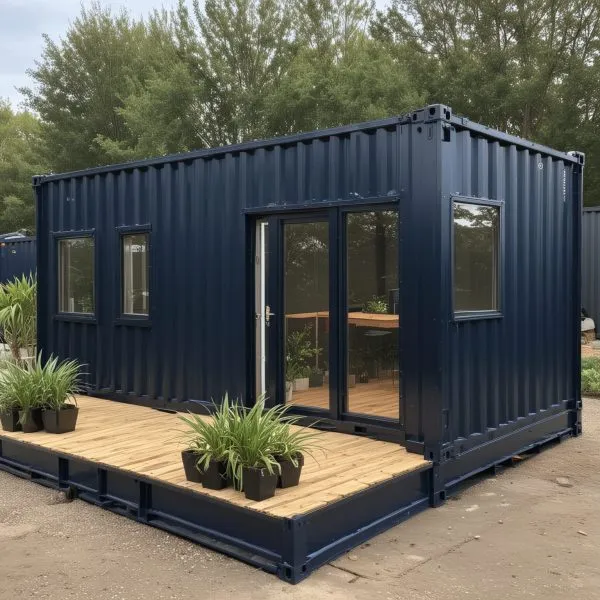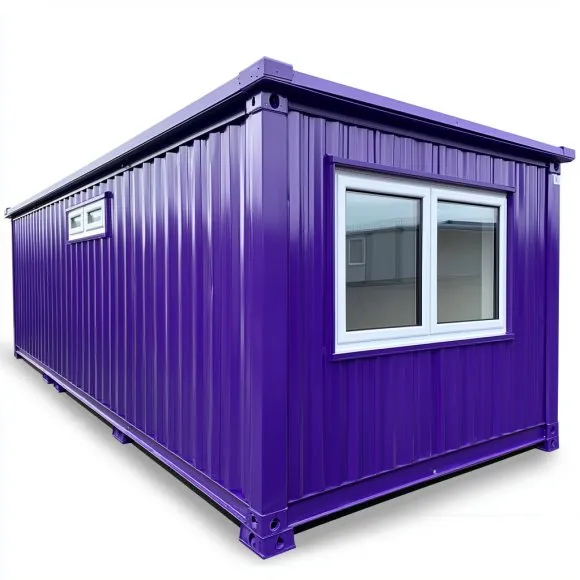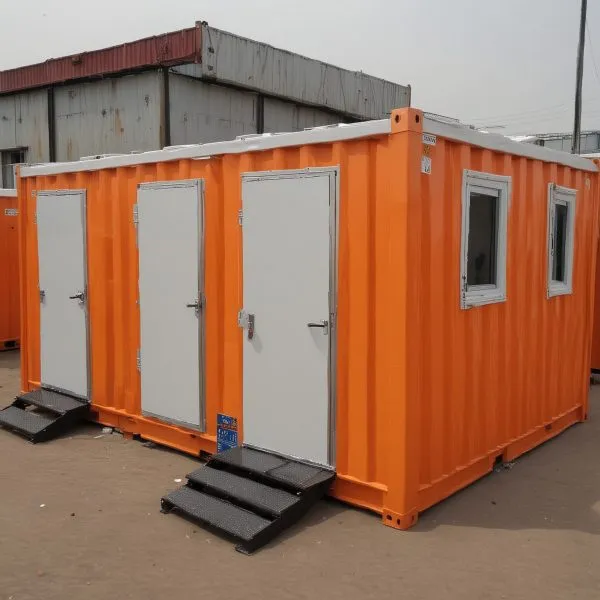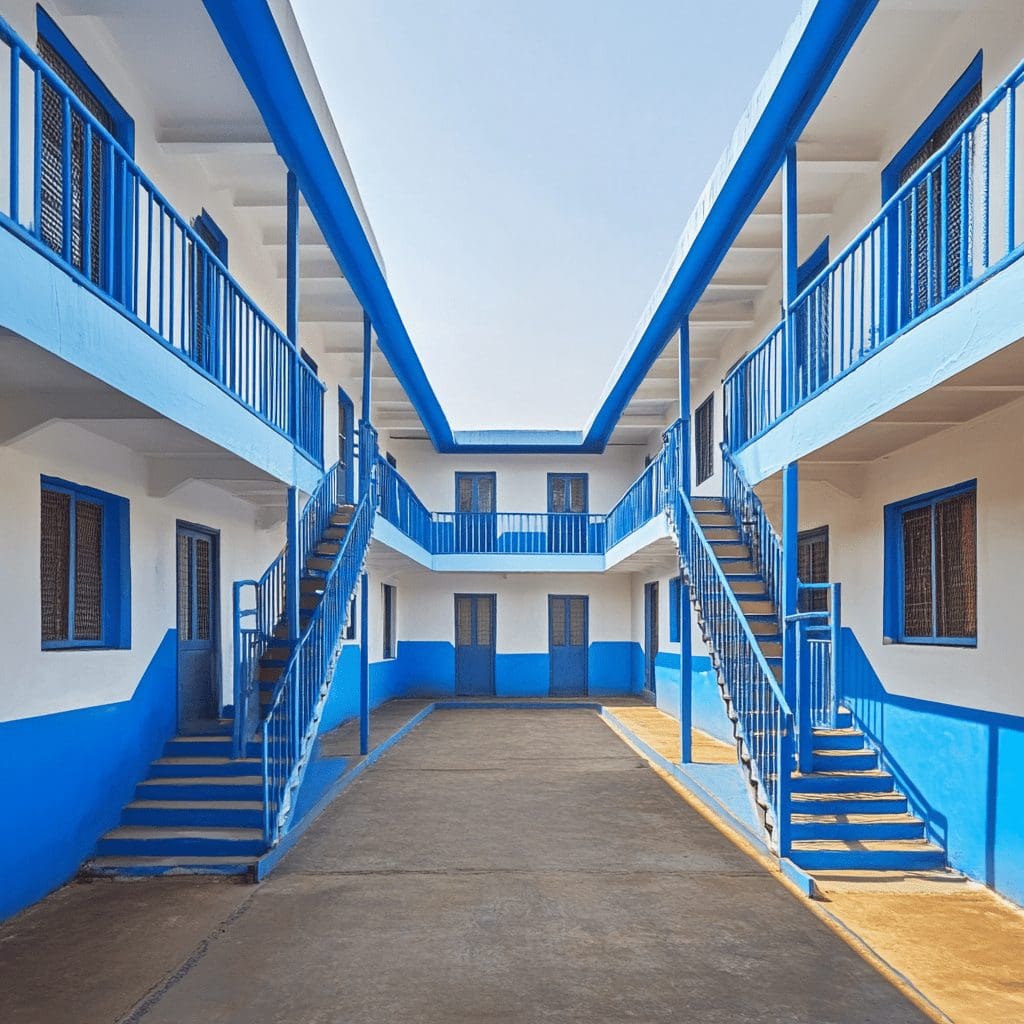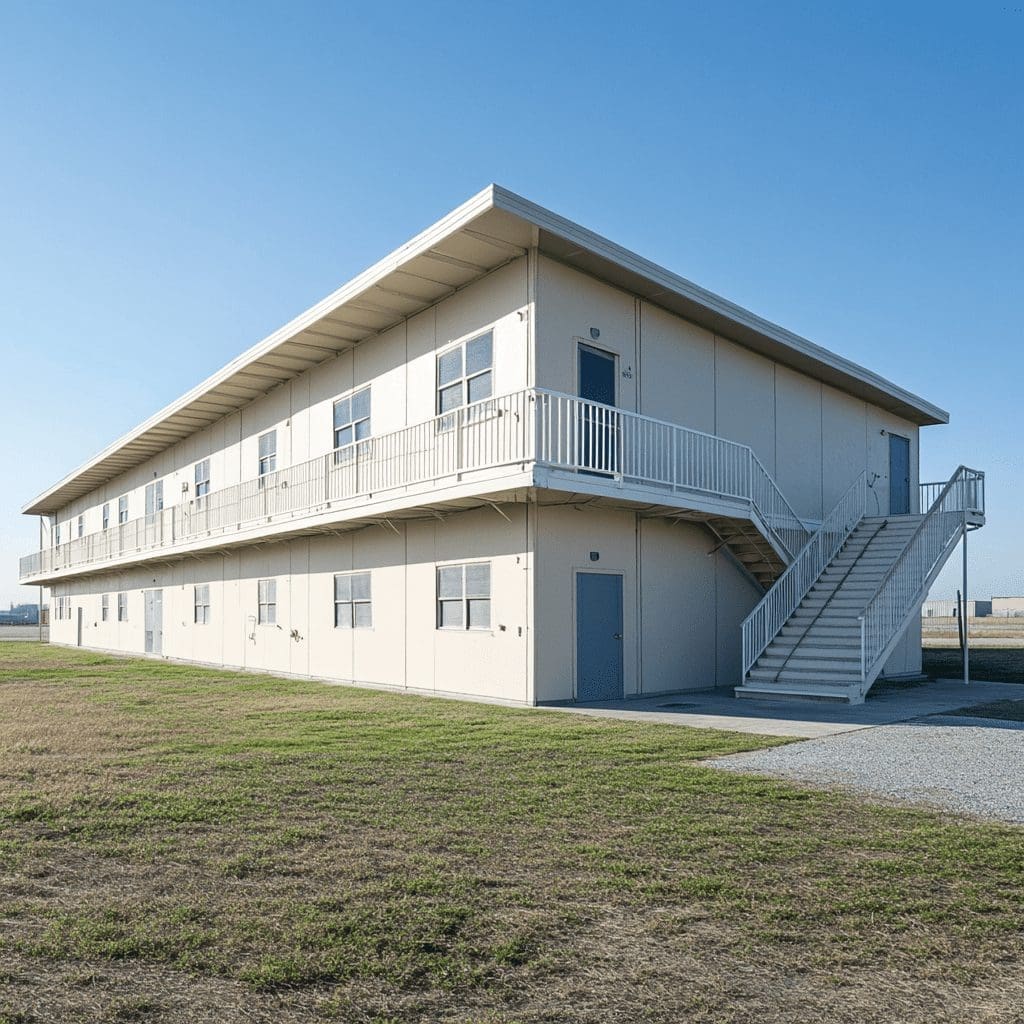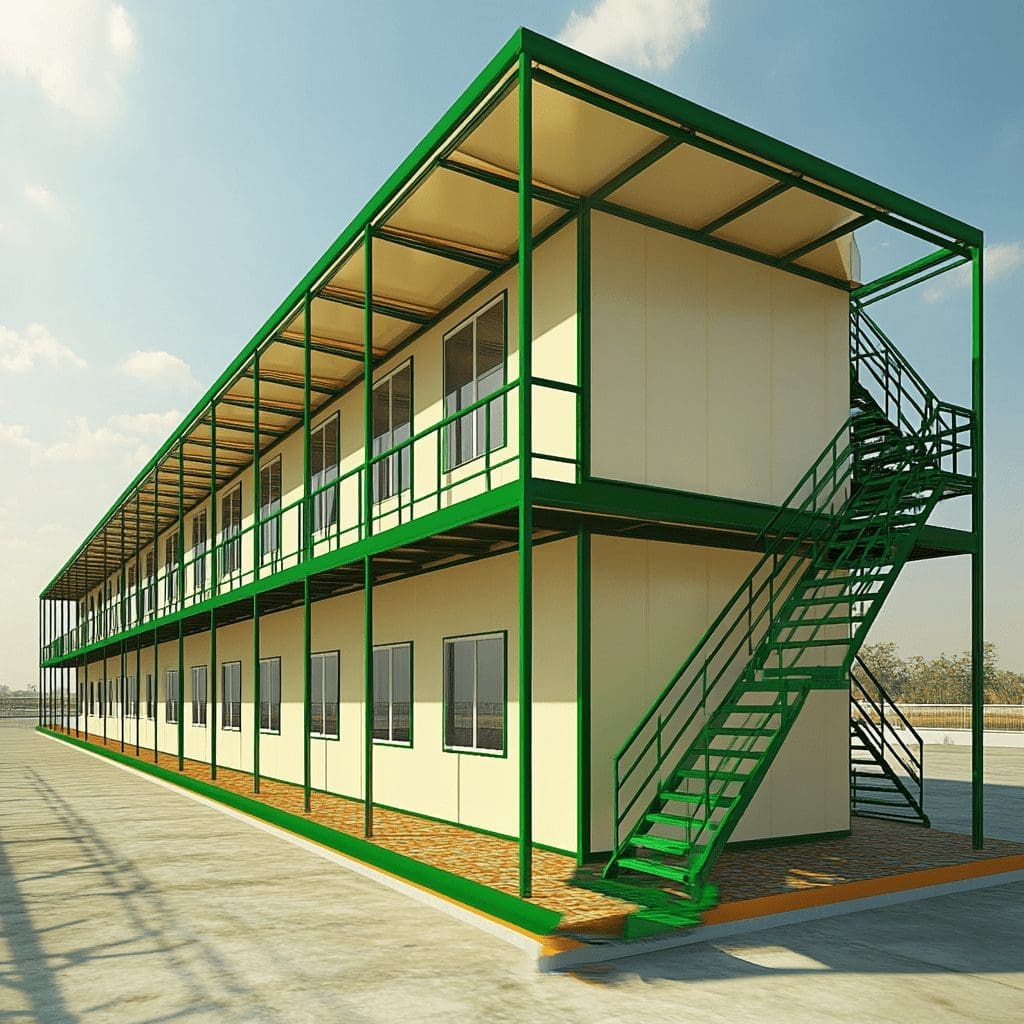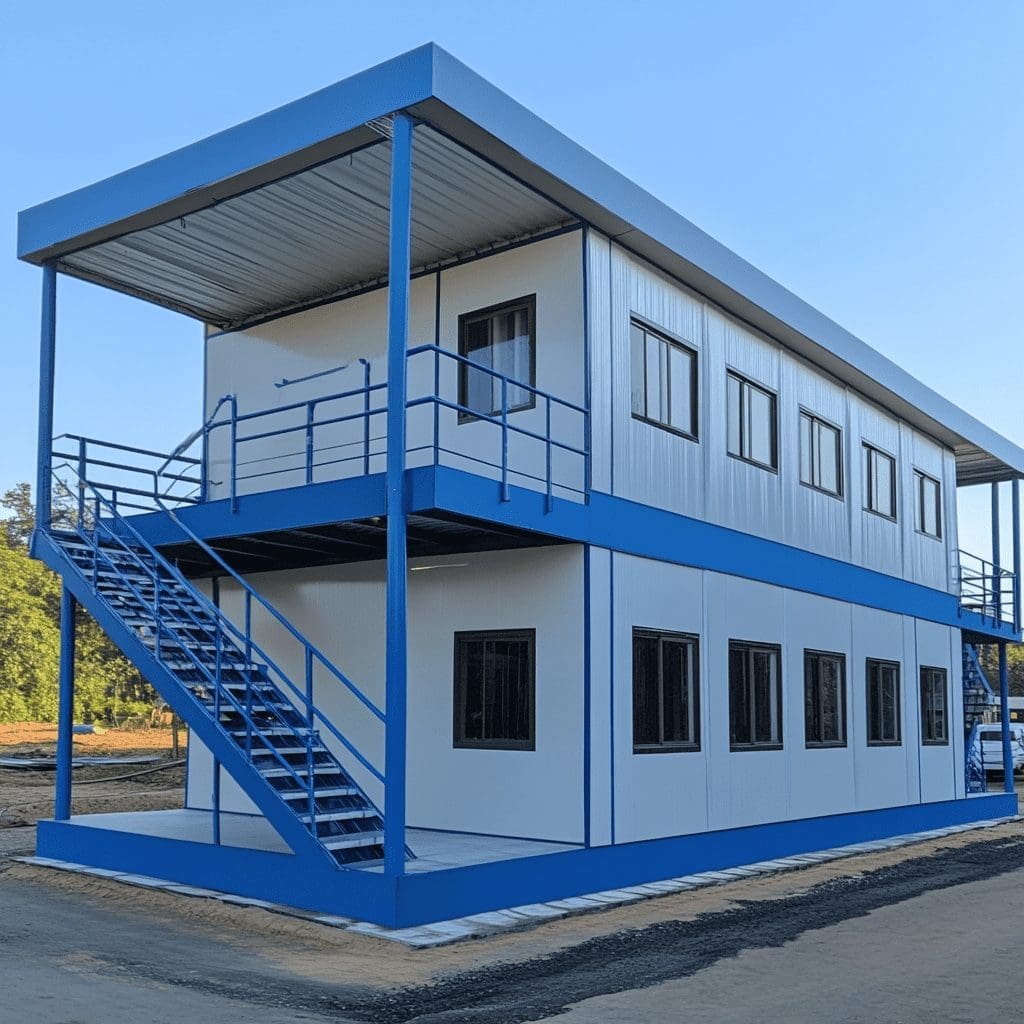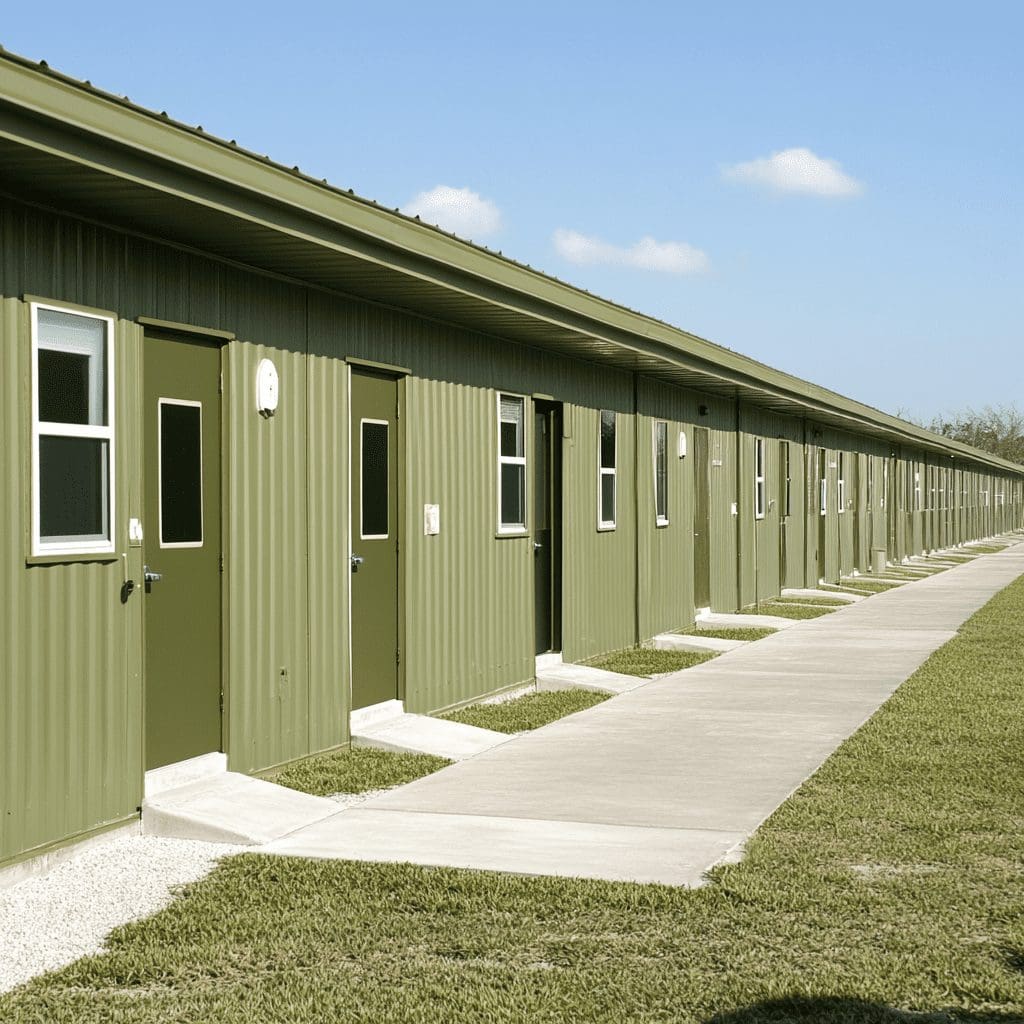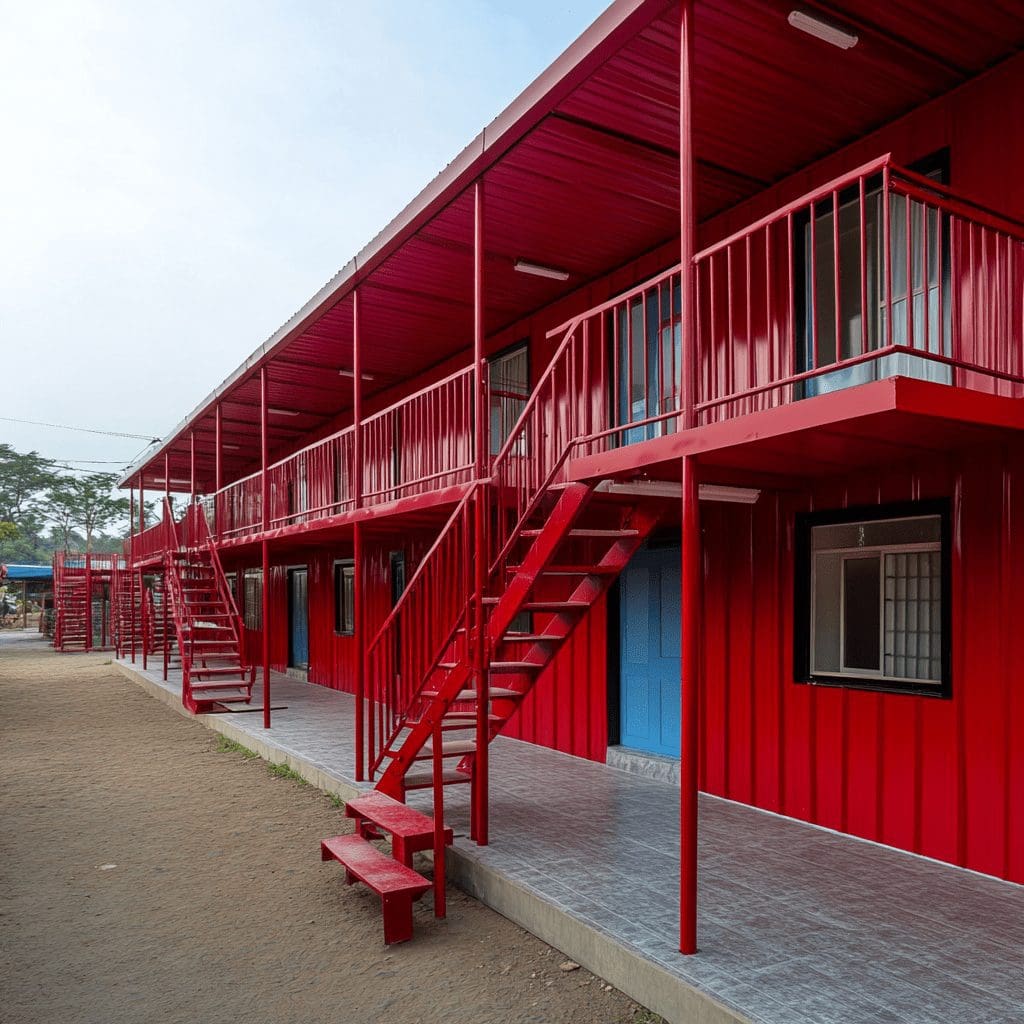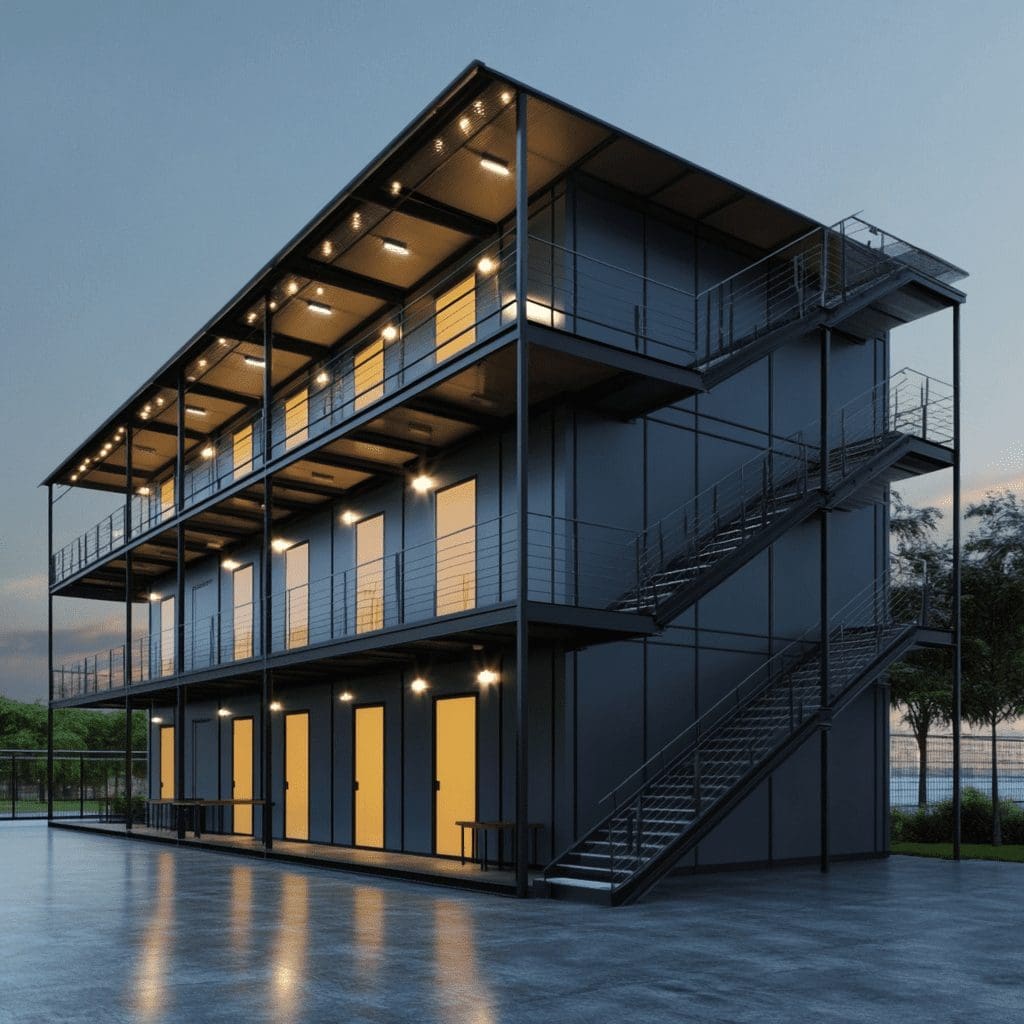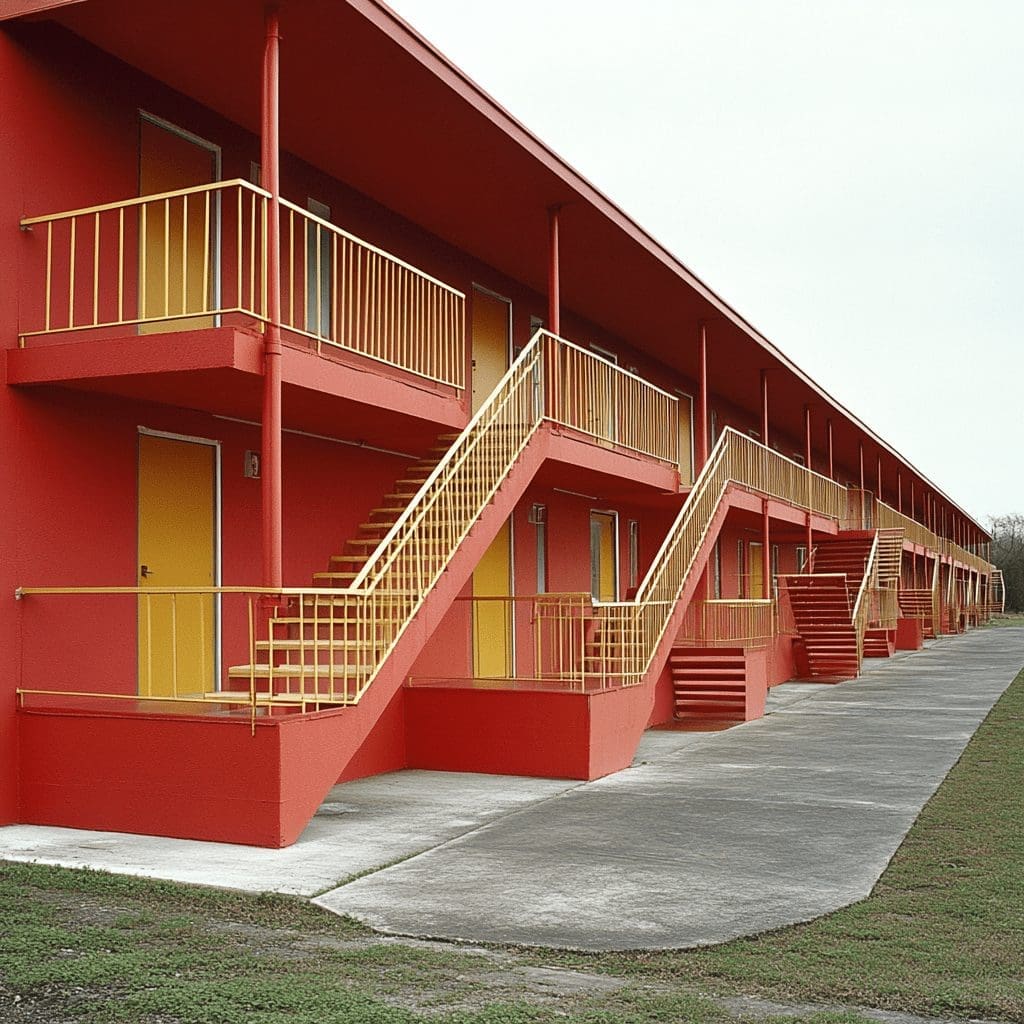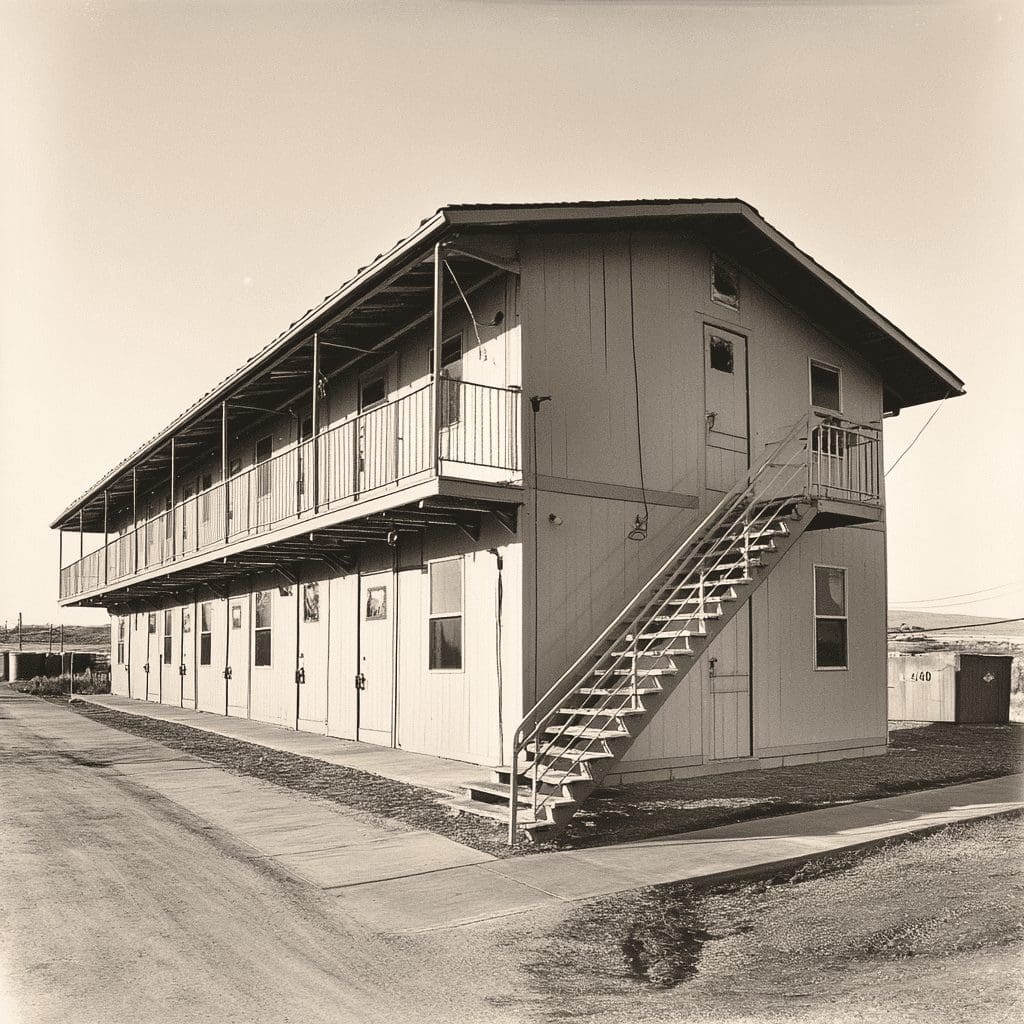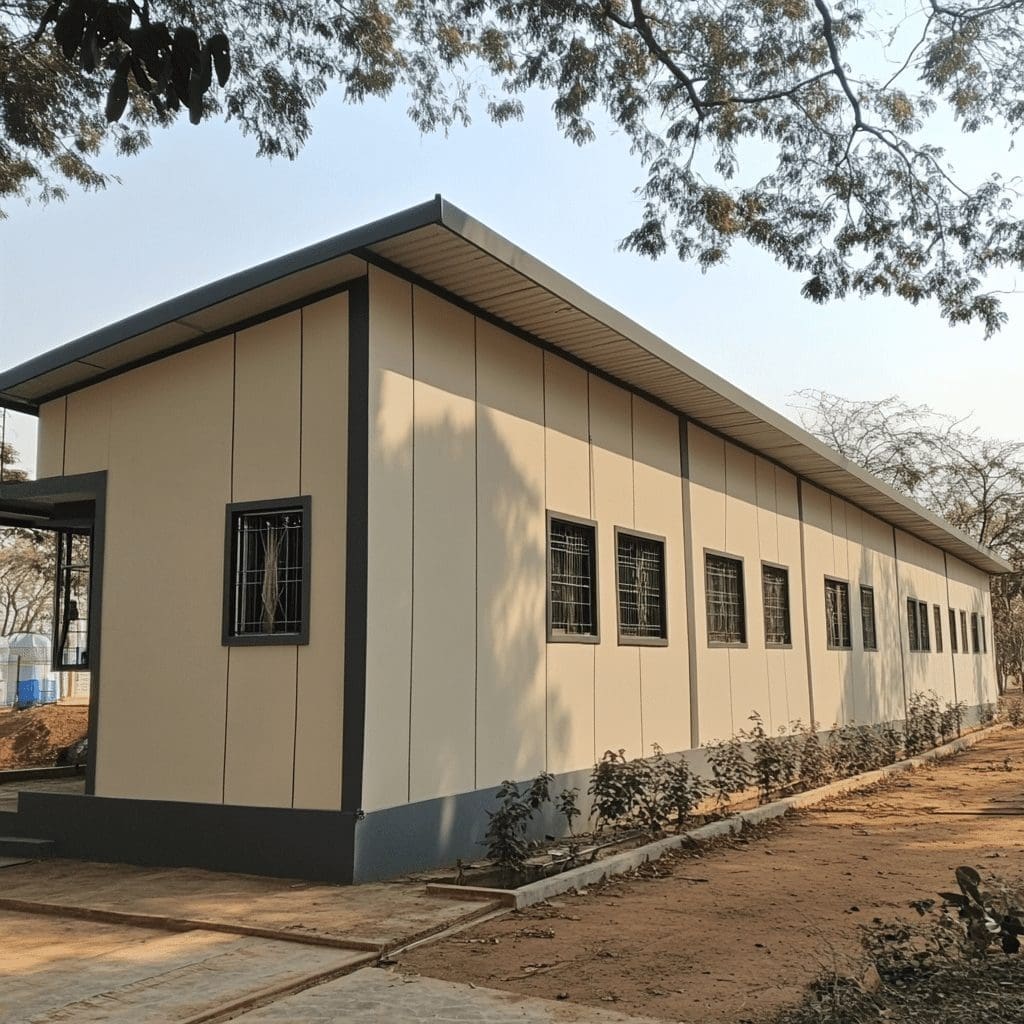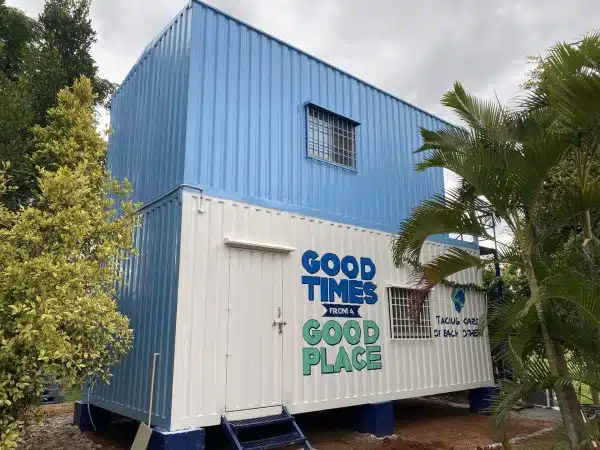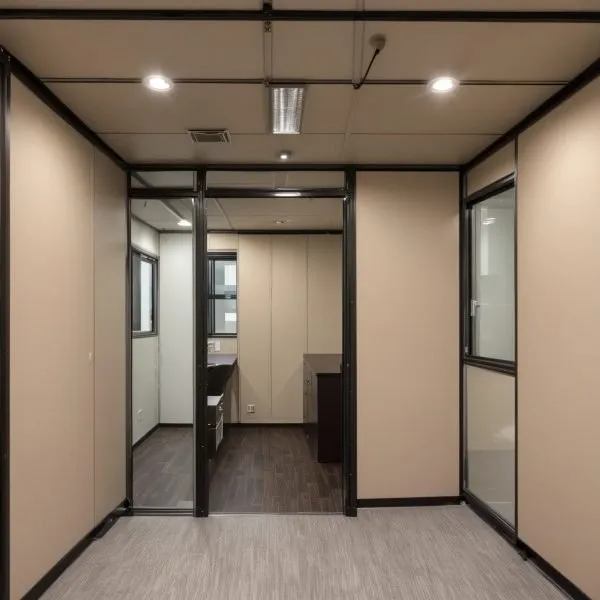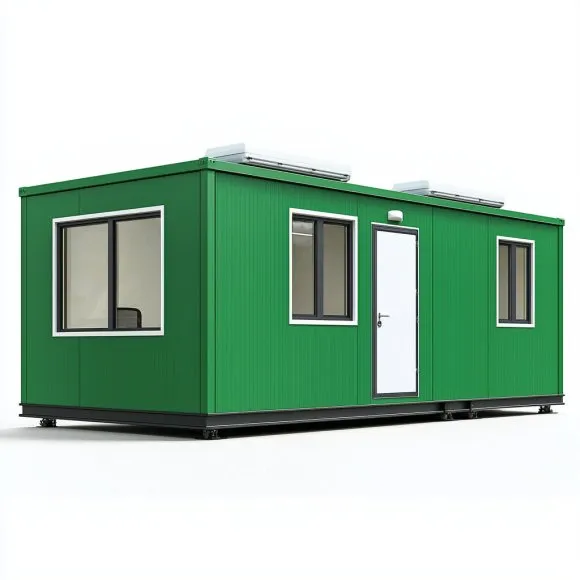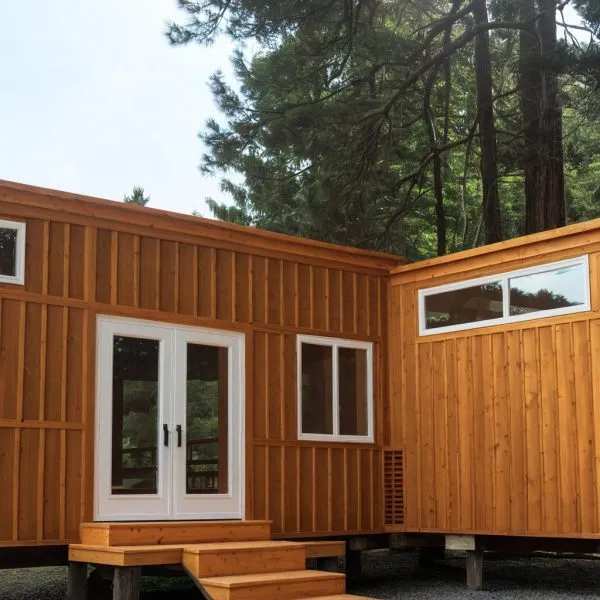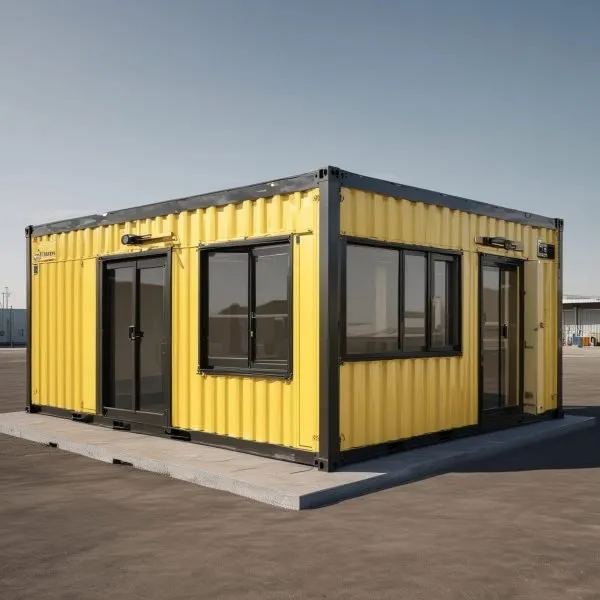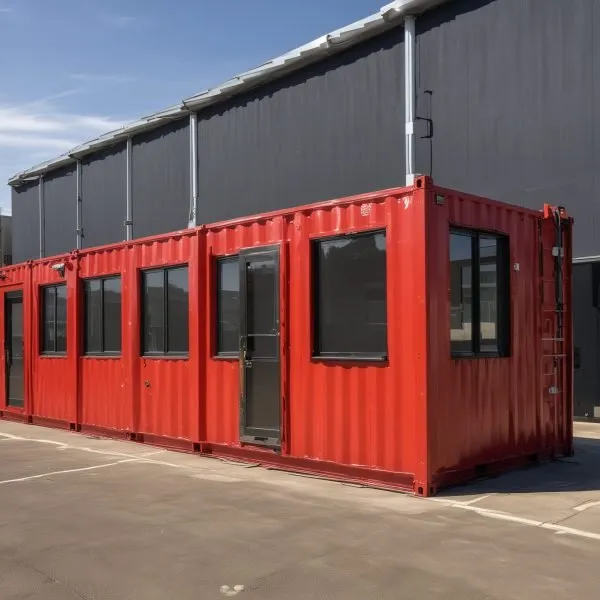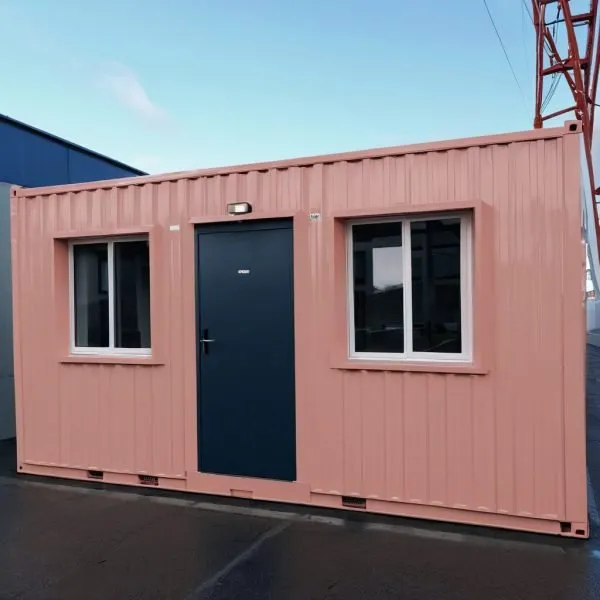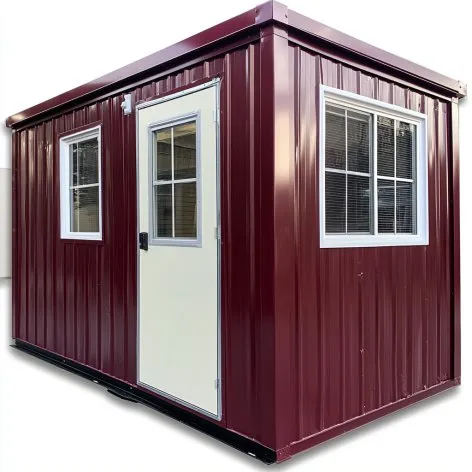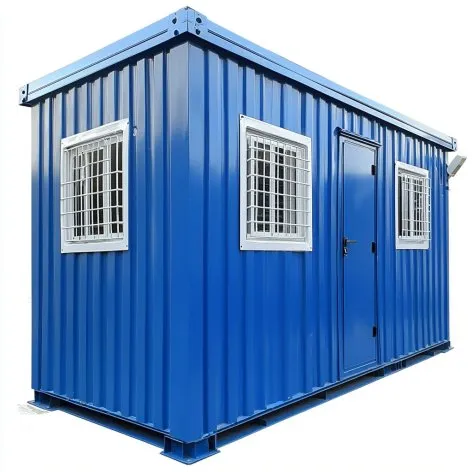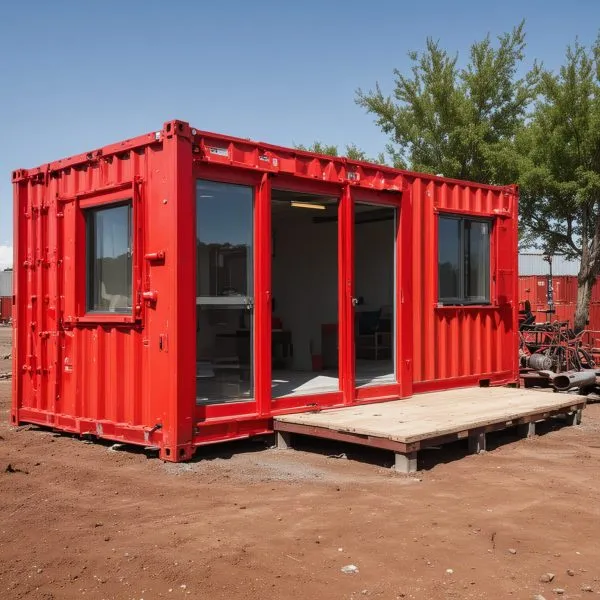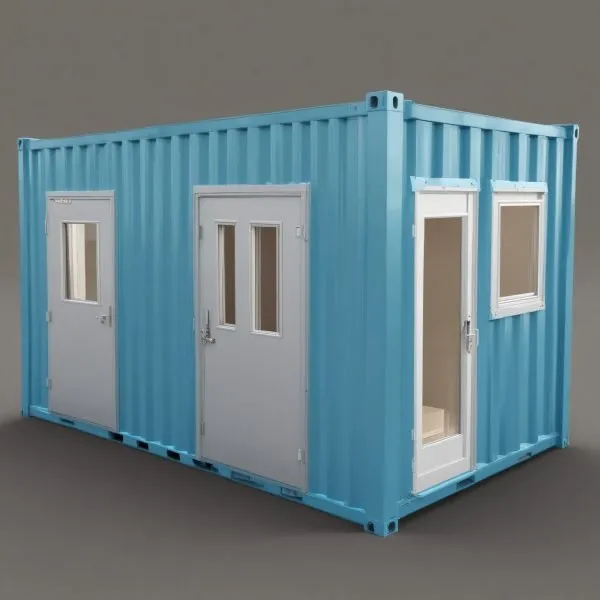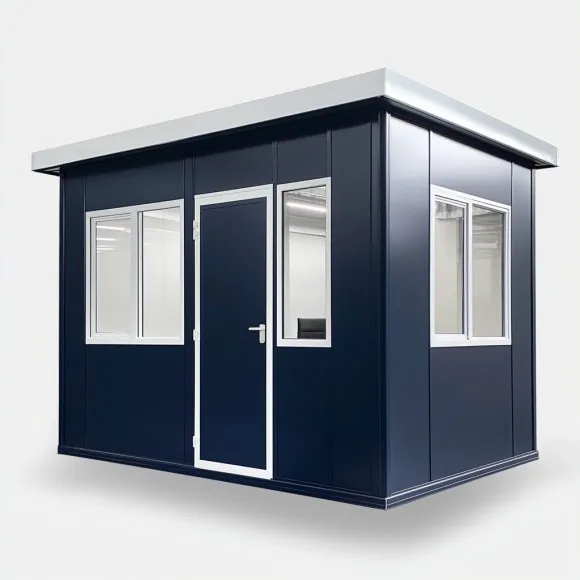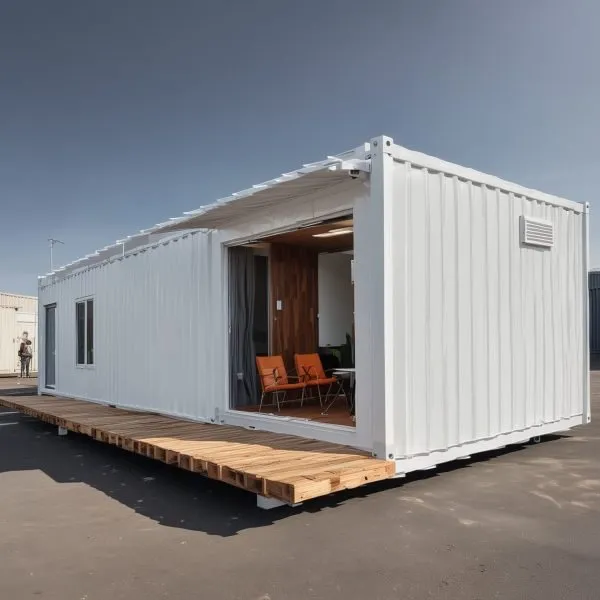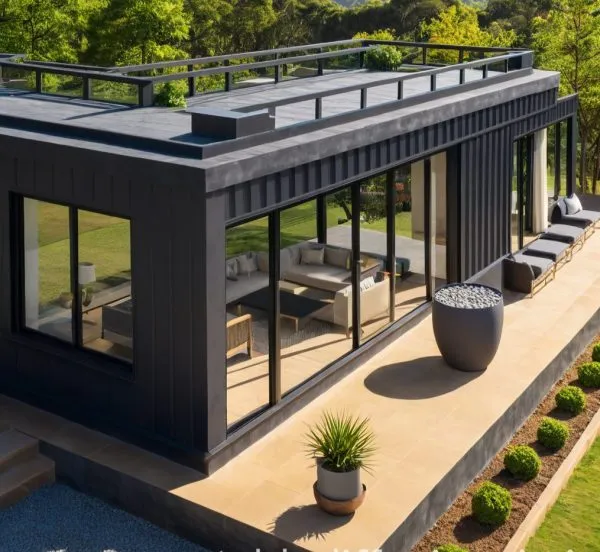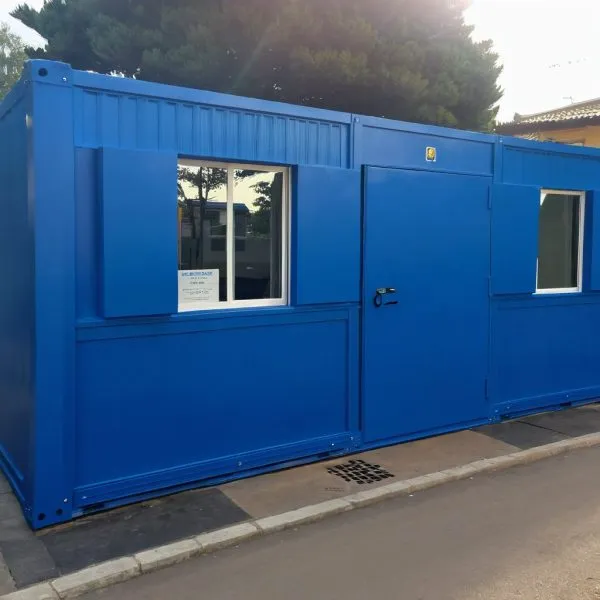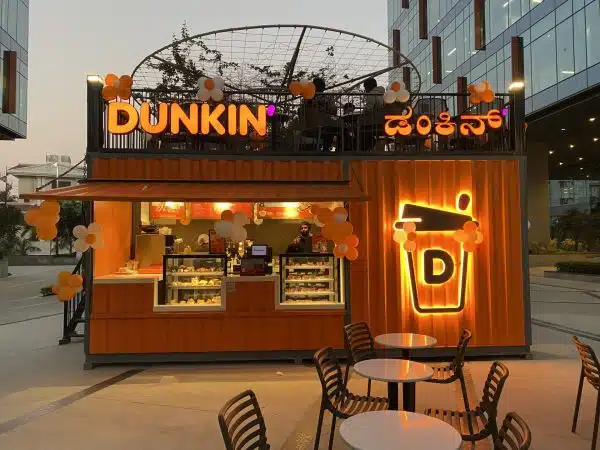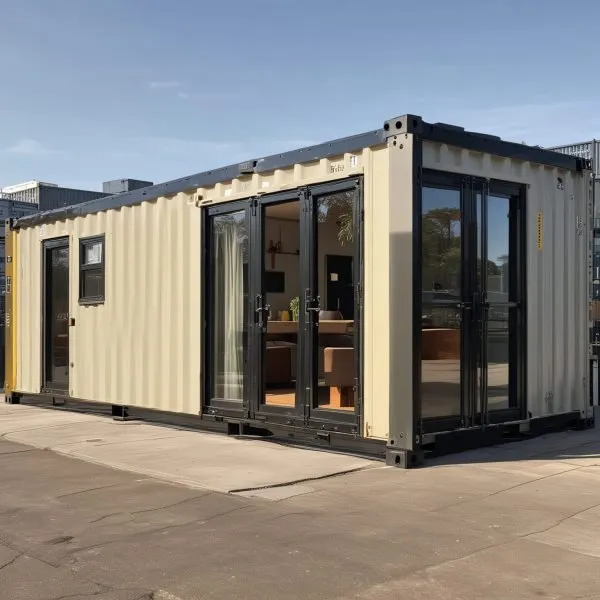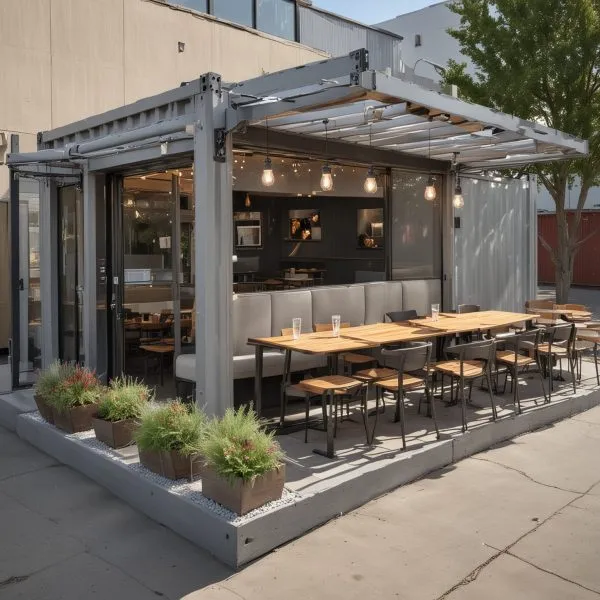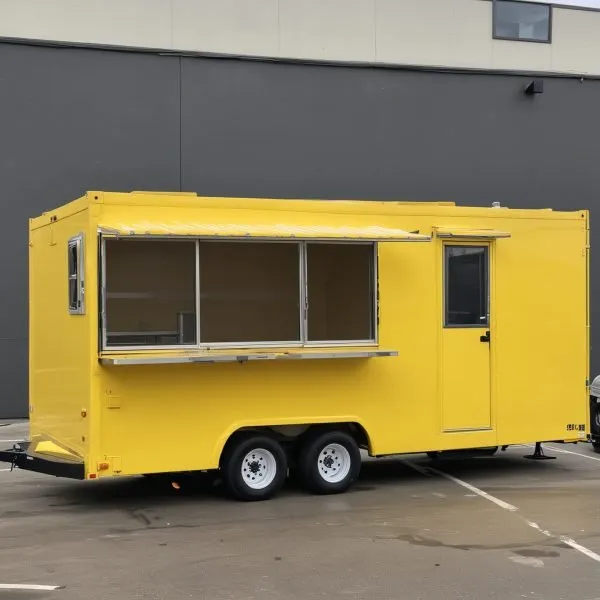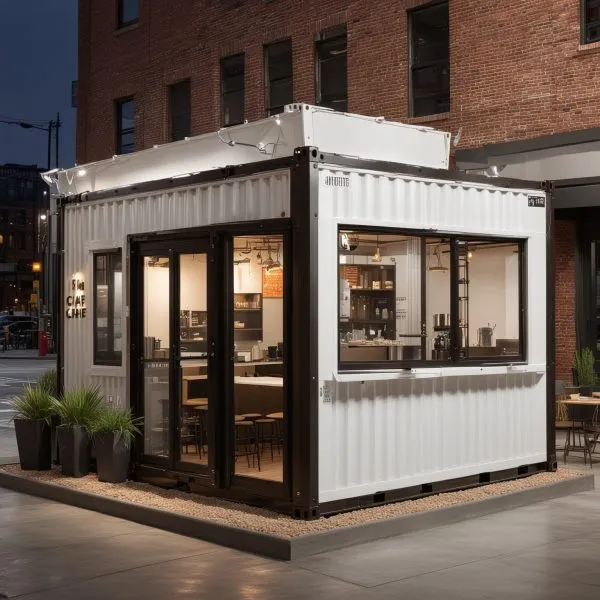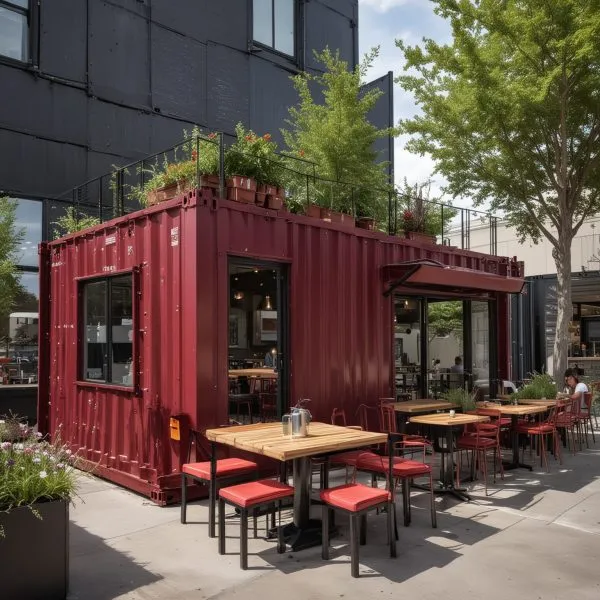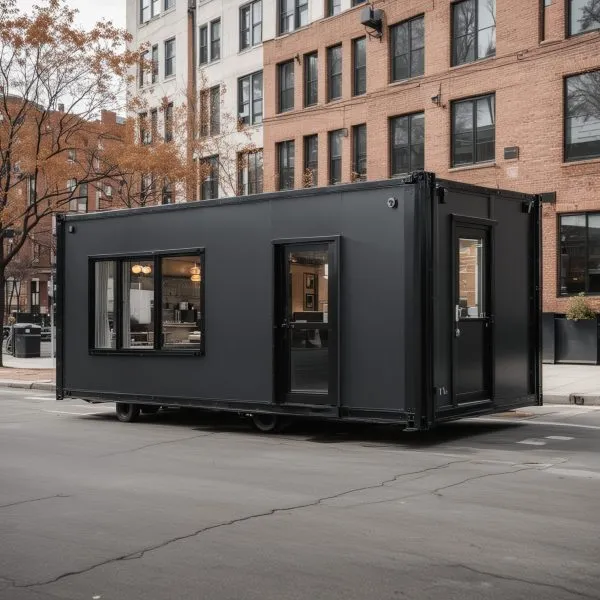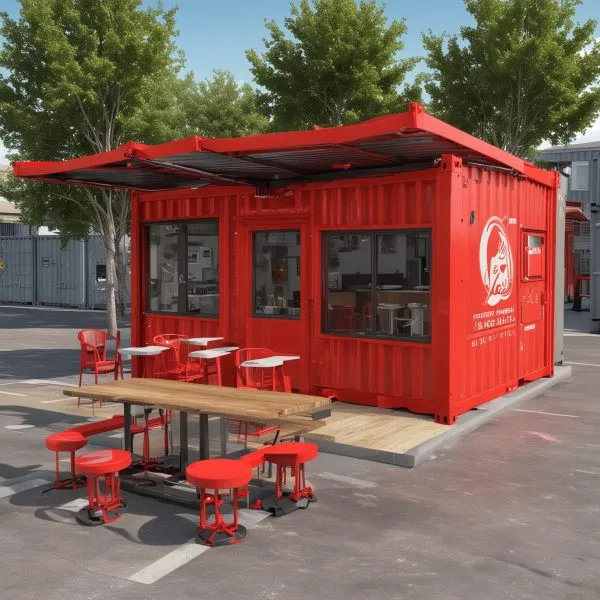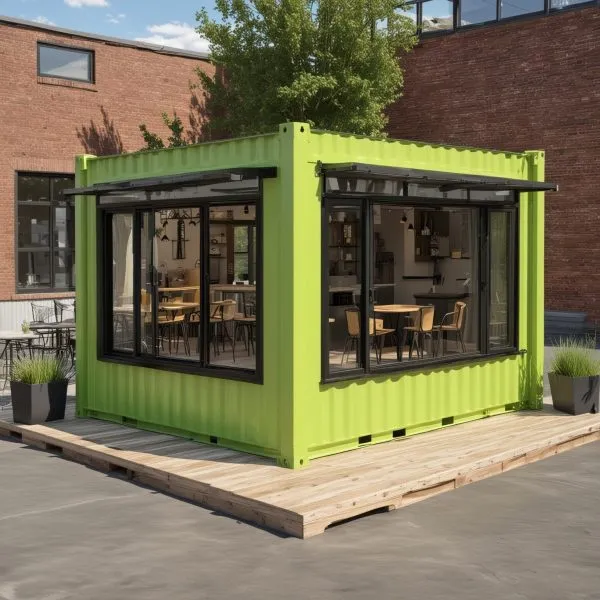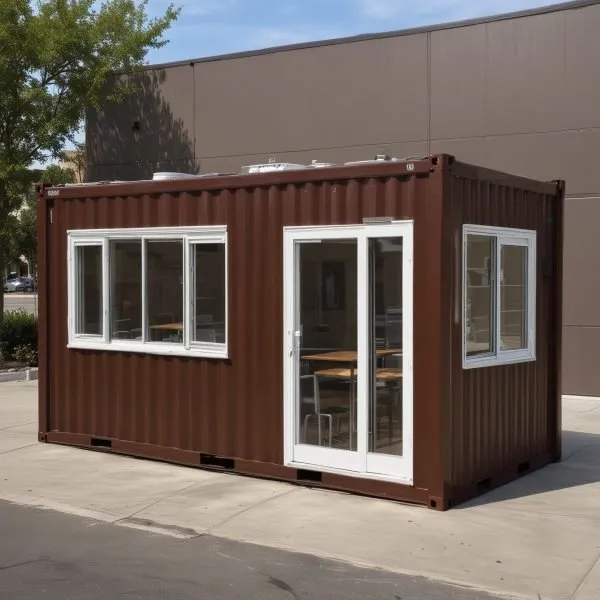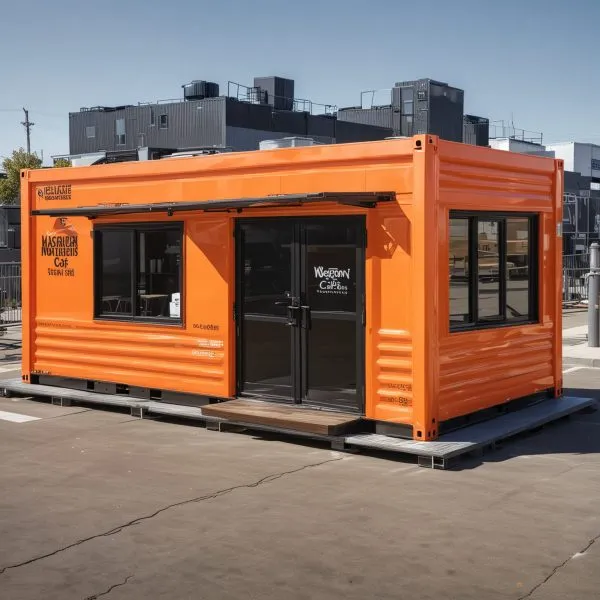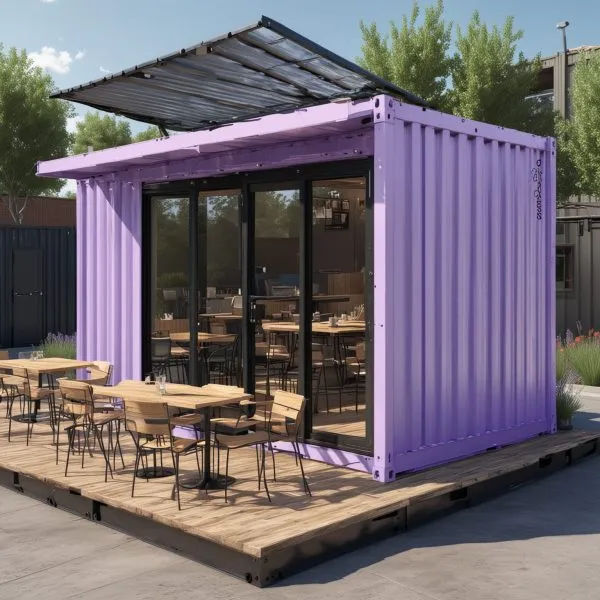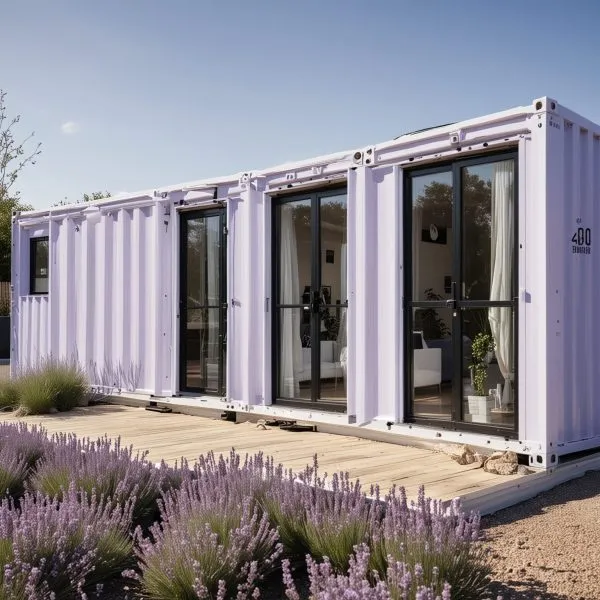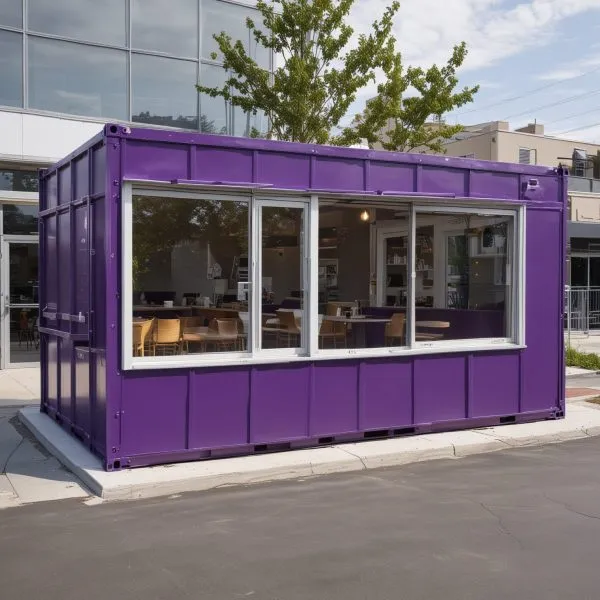Container House Price Guide 2024: Finding the Best Value for Your Money
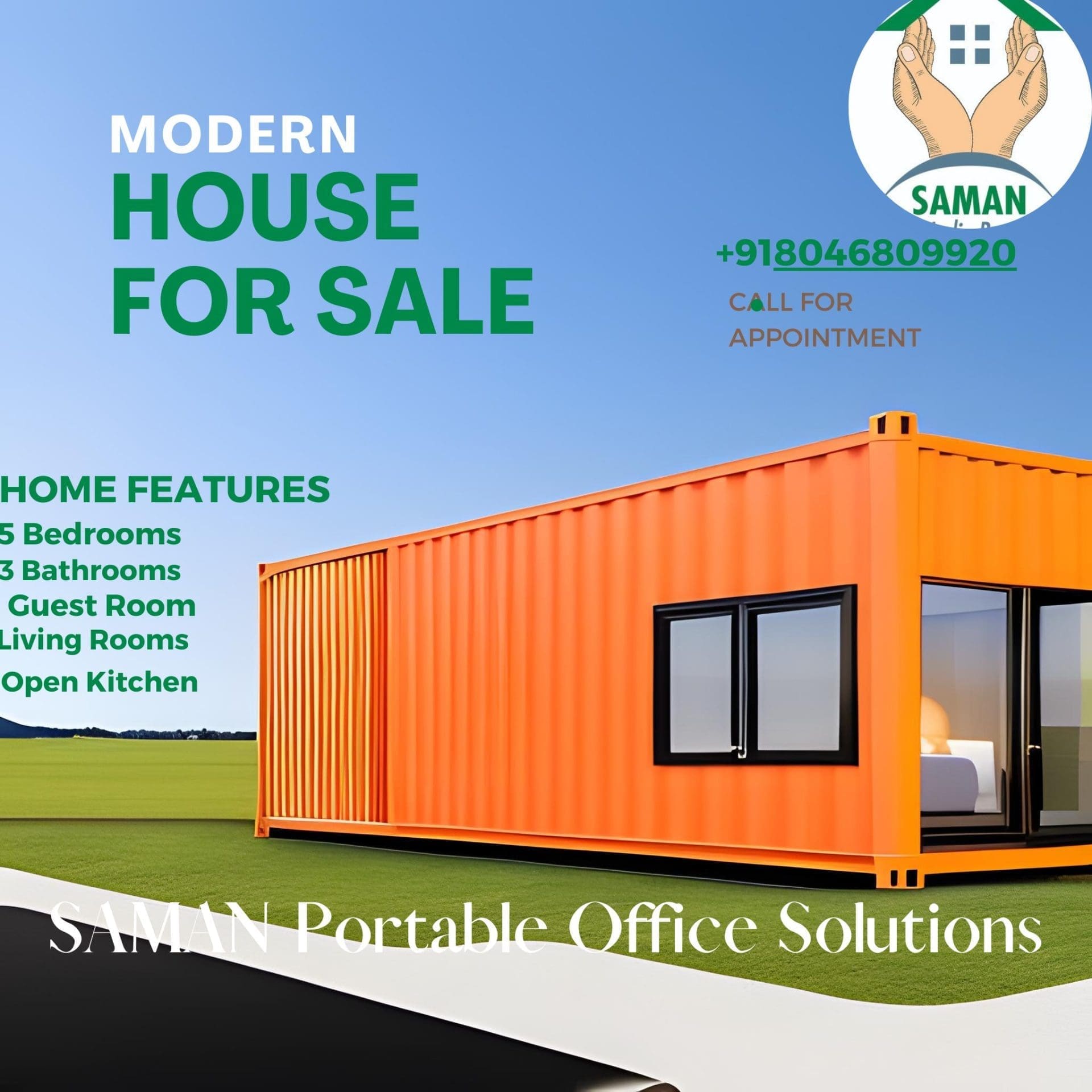
The world of sustainable living is changing fast. Container houses are now a popular choice for homeowners and builders. But how much do they cost to turn into cozy homes? Let’s dive into the latest trends and the container house price guide for 2024 to help you choose wisely.
Imagine building your dream home without spending a lot. The container house movement offers this chance. But, with many factors like material quality and customization, finding the right price can be tough. Are you ready to learn how to get the best value for your container home?
Key Takeaways
- The average cost range for a 20ft high cube container for a shipping container home in India is between ₹2.8 lakhs to ₹6.8 lakhs.
- Based on the 20ft high cube container pricing, a shipping container house can cost between ₹50 lakhs to ₹1.2 crores excluding modifications.
- The average cost range for a 40ft high cube container for a shipping container home in India is between ₹2.8 lakhs to ₹9.2 lakhs.
- Based on the 40ft high cube container pricing, a shipping container house can cost between ₹25 lakhs and ₹83 lakhs excluding modifications.
- Factors like location, material quality, and labor costs can significantly impact the final price of a container home.
Understanding Container Home Market Trends in 2024
The global container home market is booming. People are drawn to sustainable and affordable homes. The market size is set to hit USD 66.05 billion by 2024, growing at 6.72% annually. By 2034, it’s expected to reach USD 126.57 billion.
Global Market Overview
Container homes are gaining popularity worldwide. In 2023, North America led with 38% market share. The U.S. alone was valued at USD 17.64 billion. By 2034, the U.S. market is expected to grow to USD 36.79 billion, with a 6.91% CAGR.
Price Fluctuations and Market Dynamics
Container house price trends and container home pricing change due to many factors. Steel prices, shipping costs, and local rules all play a part. The cost of shipping container houses can swing with global supply chain changes. Also, container home affordability varies by region, influenced by labor and material costs.
Regional Price Variations in India
In India, container house price trends and container home pricing differ by region. Cities often have higher prices due to land costs and demand. Rural and semi-urban areas are more affordable. Knowing these differences is key for buyers looking for affordable prefab container homes and developers in India.
Basic Container House Price Ranges
The cost of a container house price range varies a lot. A basic 20-foot container home can start at $15,000. On the other hand, a 40-foot home might cost around $30,000. These prices usually include just the basics.
If you want a more budget-friendly container house, prices can reach up to $50,000 or even $100,000. These higher-end container homes come with many features. You can find better insulation, energy-saving systems, and even smart home tech.
The pricing of container houses depends on several things. This includes the container’s age and the materials used. The design’s complexity also plays a role. A container home cost guide shows that prices can vary a lot. You can get a simple home or a fancy one, depending on your budget.
Whether you’re after a budget-friendly container house or a fancy container home, knowing the prices is key. It helps you make a smart choice and get the most value for your money.
Factors Influencing Container House Costs
Building a container house involves several factors that can affect the cost. Knowing these can help you make smart choices and save money.
Location and Accessibility Impact
The place where you build your container house matters a lot. Cities are often pricier because of land costs and strict rules. But, building in rural areas might be cheaper. However, getting materials there can add to the cost.
Material Quality Considerations
The materials you choose can really change the price. High-quality insulation and custom finishes cost more. But, picking cheaper materials can save you a lot.
Labor and Construction Expenses
The cost of labor and how complex the build is also matters. Places with higher labor costs or needing special skills can increase expenses. The size and detail of your project also affect the price.
Understanding these factors helps you plan and budget better. This way, you can ensure your container house is a good investment. Container house building expenses, construction costs, and cost breakdown are key to consider when starting your project.
Size Options and Their Price Points
Size is key when it comes to container homes. They come in standard sizes, like 20-foot and 40-foot containers. A 20-foot container has about 160 square feet, while a 40-foot one has around 320 square feet.
Looking for a bigger home? You can link multiple containers together. This way, you can make your living space as big as you want. The cost per square foot goes down as the size goes up. Prices range from ₹150 to ₹400 per square foot, based on finishes and design.
- A 20-foot container home costs between ₹1,50,000 to ₹2,00,000 per unit.
- A 40-foot container home costs between ₹2,90,000 to ₹4,00,000 per unit.
- Using more than one container can make the cost per square foot as low as ₹1,000.
The modular container house pricing, cost per square foot, and container house price comparison can change. This is due to location, material quality, and design complexity. Looking around in your area can help you find a good deal.
Container House Price for Different Grades
Container home prices change a lot based on the container’s grade and condition. Let’s look at how different qualities affect the cost.
One-Trip Container Homes
One-trip containers, used only once for shipping, are the priciest. They cost between ₹2,500 to ₹5,000 for a 20-foot unit. Their top-notch condition and little wear make them a top pick for luxury homes.
Cargo-Worthy Options
Cargo-worthy containers, still good for shipping, are cheaper. You can buy them for ₹1,500 to ₹5,000. They offer a good mix of quality and affordability.
Wind and Watertight Selections
Wind and watertight containers are a budget-friendly choice. These are good for storage but not shipping. Prices range from ₹1,100 to ₹2,500. But, they might need more repairs to be cozy homes.
As-is containers are the cheapest but need lots of fixes. They’re not as popular. The container home price calculator can help find the best deal for you.
Knowing about container home prices and grades helps you choose wisely. You can find a prefabricated container home that fits your budget and style.
Customization Costs and Add-ons
Customizing your container house cost-effective solutions can affect your budget. Customization costs for container homes include adding windows and doors, which can cost between $2,000 and $5,000. But, if you want more, like full insulation, plumbing, and electrical, the price can go up to $30,000 or more.
If you want a modular container home prices with luxury, high-end finishes or smart home systems will add to the cost. It’s important to find a balance between what you want and what you can afford. This way, you get the most value for your money.
- Basic modifications like windows and doors: $2,000 to $5,000
- Extensive customizations (insulation, plumbing, electrical): $10,000 to $30,000+
- Luxury features (high-end finishes, smart home systems): Additional costs
Think carefully about what you need and what you can afford. This way, you can create your dream container home without breaking the bank.
Budget-Friendly Container Home Solutions
If you’re looking for cheap container houses or economical container houses, there are ways to save money. You can find a container home price guide that fits your budget without losing quality or style.
Cost-Saving Strategies
Using recycled or salvaged materials can help cut costs. Repurposing shipping containers or using pre-owned parts can save a lot of money. Also, choosing a simple design can save money without losing functionality.
DIY vs. Professional Installation
DIY installation can save on labor costs but needs skill and time. Professional installation ensures quality but may cost more. Think about your budget and skills to decide the best option.
Material Selection Tips
- Choose materials that last long and need little upkeep, even if they cost more upfront.
- Focus on energy-saving features like insulation and windows to cut down on utility bills.
- Consider sustainable materials like reclaimed wood or recycled steel for environmental benefits and possible tax savings.
By using these budget-friendly tips, you can build an economical container house that’s affordable. With smart planning and cost-saving ideas, you can have a cheap container house that’s still stylish and well-made.
Luxury Container House Features and Pricing
Luxury container homes can cost over $200,000. They offer top-notch features that make living in a container home special. These homes have big glass walls for lots of natural light, custom appliances, and smart home tech.
These homes use more than one container for bigger spaces. They also have green features like solar panels and green roofs. This makes them both eco-friendly and valuable in the long run.
Looking for the best in cost analysis and sustainable container home pricing? Luxury container homes are the top choice. They combine modern living with caring for the environment. Their designs and features are truly unique.
- Expansive glass walls for abundant natural light
- Custom-designed appliances and smart home technologies
- Utilization of multiple containers for spacious floor plans
- Sustainable features like solar panels and green roofs
- Meticulous attention to detail and bespoke finishes
Hidden Costs and Additional Expenses
When planning your container house, remember to include hidden costs and extra expenses. These can add up and affect your budget. It’s important to think about them from the start.
Permit and Legal Fees
You’ll need to get permits before building your container home. Permit fees can be $1,000 to $10,000, depending on where you are. Make sure to budget for these legal costs.
Site Preparation Costs
Preparing the site for your home is another big expense. This includes foundation work and making sure the land is even. Costs can be $5,000 to $20,000, based on the site’s needs.
Maintenance Expenses
Container homes need less maintenance than traditional homes. Still, you should budget for upkeep. Plan to spend 1% to 3% of your home’s value each year for maintenance and repairs.
Knowing about these hidden costs helps you budget better. This way, you can avoid surprises and make the most of your container home investment.
Comparing Traditional Housing vs Container Homes
Container homes are becoming a popular choice over traditional housing. They might cost a bit more to start, but they save money in the long run. Plus, they are better for the environment.
The price of container houses in India varies from ₹25 lakhs to ₹1 crore. This depends on the location, size, and how customized it is. Traditional homes of the same size can cost between ₹40 lakhs and ₹2 crores. This makes container homes a more cost-effective prefab container home option.
- Shipping container homes start at around ₹25 lakhs, offering an affordable entry point for potential homeowners.
- Construction costs for container homes often remain lower than traditional construction, with starting prices under ₹30 lakhs for basic modifications.
- Container homes can be constructed significantly faster than traditional homes, potentially leading to cost savings on labor.
- Starting prices at ₹25 lakhs for container homes offer long-term saving opportunities through reduced maintenance costs and energy efficiency.
Even though traditional homes might have more space, container homes are still a smart choice. They are cost-effective and sustainable. With their growing popularity and creative designs, comparing container house price to traditional housing is key for those looking for affordable prefab container homes.
Financing Options for Container Homes
Getting a loan for a container home can be tricky. These homes are not like traditional houses. But, there are ways to finance your dream home.
Mortgage Possibilities
Some big banks might not want to lend for container homes. But, there are special lenders who can help. They look at the container home pricing and price of prefabricated container homes more than usual.
To get a loan, you’ll need a good credit score, around 620. Also, your debt-to-income ratio should be under 36%.
Government Schemes
Some government loans, like FHA loans, might work for container house cost estimates. These loans are easier to get, needing a score of 500 and a debt ratio up to 43%.
Alternative Funding Sources
- Personal loans: If you can’t get a mortgage, a personal loan could work. Lenders want a credit score between 610 and 640.
- Home equity lines of credit (HELOCs): If you own a house, you might use its equity for your container home.
- Manufacturer financing: Some makers of container homes offer their own loans. This can make getting money easier.
Exploring demand for container house trends that are sustainable and cost-effective is driving the market forward is a big decision. Make sure to think about the container home pricing, price of prefabricated container homes, and container house cost estimates. This will help you make a choice that fits your budget and future plans.
Sustainability and Long-term Value
The global container homes market is growing fast. It’s expected to hit around USD 121.6 Billion by 2033. People are now looking for homes that are good for the planet and last long.
Container homes are great for the environment. They use recycled steel, saving 3,500 kgs of steel and 12,000 kgs of CO₂ emissions compared to regular houses. This green choice also means cost savings for homeowners.
These homes are also energy-smart. They can cut utility bills by 20% to 30% compared to traditional houses. With more people moving to cities, the need for affordable, green homes like container homes will only grow.
Even though container homes might cost more upfront, they can save money in the long run. They also hold their value well. Plus, their flexibility and customization make them a smart investment, with the chance for rental income and higher resale values later on.
The container homes market is changing, with a big focus on being green and affordable. This shift is important for those looking for new, adaptable homes. The demand for container house trends that are sustainable and cost-effective is driving the market forward. It makes container homes a great choice for those wanting to live green while investing in their future.
Conclusion
Container homes are a smart and affordable housing choice. Prices vary from $30,000 to over $200,000. This depends on size, design, and where you live.
These homes come with their own set of challenges. But, they are eco-friendly and can be tailored to your liking. This makes them a popular choice for those looking for a budget-friendly home.
SAMAN Portable Office Solutions Private Limited provides customized services. They ensure your needs are met with precision and quality. They focus on making your space functional, flexible, and affordable.
Planning and budgeting are key to getting the most out of your container home. By understanding the costs, you can find a home that fits your budget and lifestyle.
FAQ
What is the average cost of shipping containers in 2024?
The cost of shipping containers varies by size, condition, and location. In 2024, used 20 ft containers cost between $1,500 and $3,000. New ones are priced at $2,500 to $5,000.
40 ft containers are pricier, with used ones costing $2,000 to $4,500. New ones range from $3,500 to $6,500. Prices are influenced by fuel costs, steel prices, and global market dynamics.
What is the current growth trend in the global container home market?
The global container home market is growing. People are interested in sustainable and affordable housing. Prices change due to steel costs, shipping trends, and local rules.
In India, prices vary by region. Urban areas are more expensive due to land costs and demand.
What are the basic price ranges for container houses?
Prices for container houses vary by size and condition. A basic 20 ft container home starts at $15,000. A 40 ft home begins at $30,000.
These prices include basic modifications. Customized homes can cost $100,000 or more, depending on design and materials.
What factors influence the cost of container houses?
Location greatly affects costs, with urban areas being more expensive. Material quality, especially insulation and finishes, also impacts the cost.
Labor costs vary by region and project complexity. Specialized skills for modification can increase costs.
How do the prices differ based on container size?
Container sizes range from 20 ft to 40 ft. A 20 ft home offers 160 square feet, while a 40 ft home offers 320 square feet.
Larger homes can be made by combining containers. Costs per square foot decrease with larger sizes, ranging from $150 to $400.
What are the different grades of containers and their corresponding prices?
One-trip containers, used once, are the most expensive, costing $2,500 to $5,000 for a 20 ft unit. Cargo-worthy containers, still good for shipping, cost $1,500 to $5,000.
Wind and watertight containers, good for storage, are more affordable. As-is containers are the cheapest but may need repairs.
How much do customization and add-ons affect the overall container house cost?
Customization can greatly increase costs. Basic modifications like adding windows and doors cost $2,000 to $5,000.
More extensive customizations, like insulation and plumbing, can add $10,000 to $30,000. Luxury features further increase costs.
What are some cost-saving strategies for building container homes?
Saving money includes using recycled materials and simpler designs. DIY installation can cut labor costs but requires skill and time.
Professional installation ensures quality but is more expensive. Choosing durable materials can save money in the long run.
How much do luxury container homes cost?
Luxury homes can cost over $200,000. They feature high-end finishes, custom designs, and advanced technologies.
Features like solar panels and green roofs add to the cost but make the home eco-friendly.
What are the hidden costs associated with container homes?
Hidden costs can significantly impact the budget. Permit fees range from $1,000 to $10,000. Site preparation, including foundation work, can add $5,000 to $20,000.
Annual maintenance costs are generally lower than traditional homes but still need consideration, ranging from 1% to 3% of the home’s value annually.
How do container homes compare to traditional homes in terms of cost?
Container homes are 20% to 30% cheaper than traditional homes of similar size. A 1,000 square foot container home might cost $100,000 to $175,000.
However, location, design complexity, and local building codes can affect this comparison.
What are the financing options available for container homes?
Financing container homes can be challenging. Some lenders offer specialized loans for prefab or modular homes. Government schemes like FHA loans might be applicable in certain cases.
Alternative funding sources include personal loans, home equity lines of credit, or manufacturer financing programs.
How do container homes contribute to sustainability and long-term value?
Container homes offer significant sustainability benefits and can increase long-term value. Energy-efficient designs can reduce utility costs by 20% to 30% compared to traditional homes.
The use of recycled materials and reduced construction waste contribute to environmental sustainability. While initial costs may be higher for eco-friendly features, they often result in long-term savings and increased property value.
 Container Cafe
Container Cafe